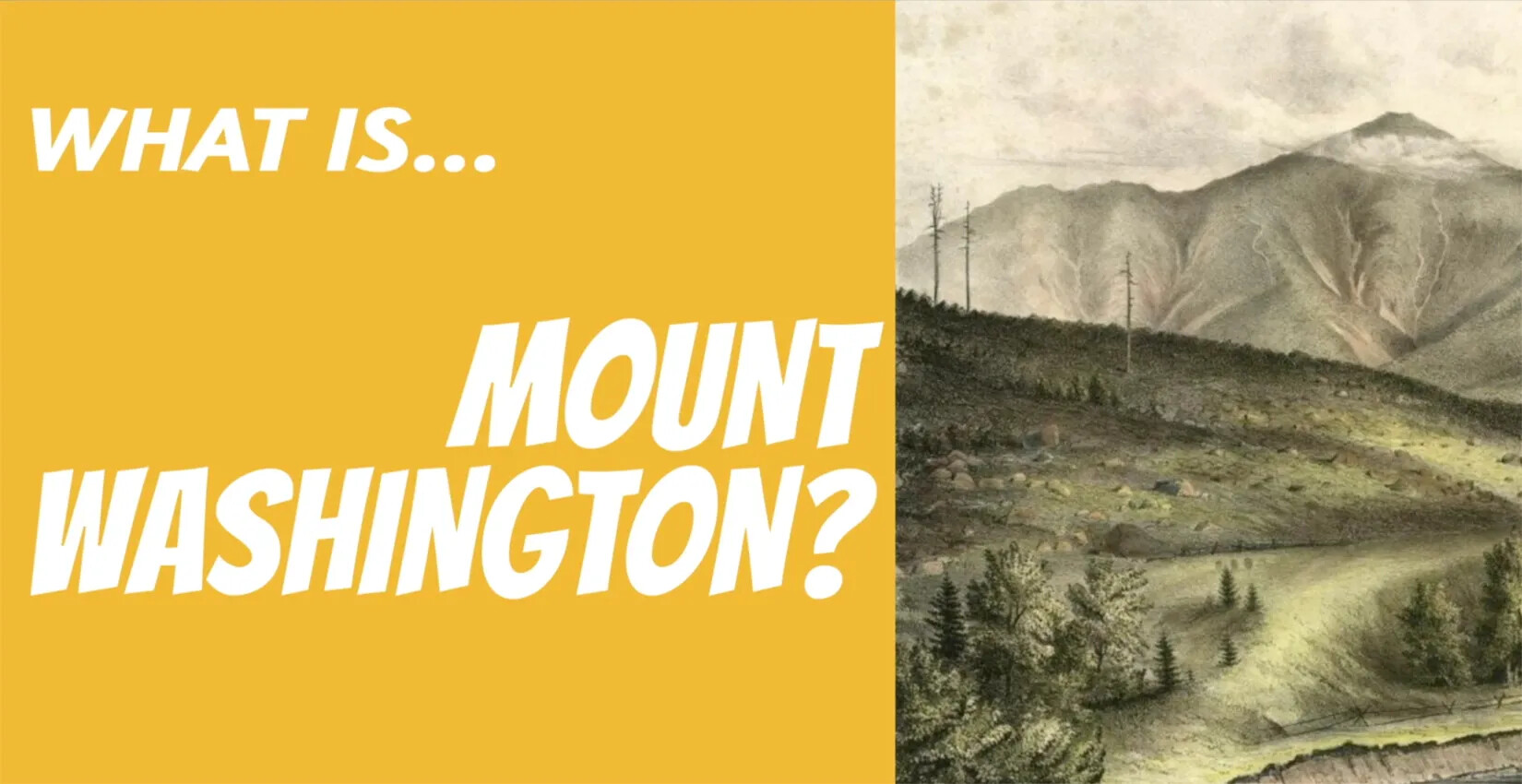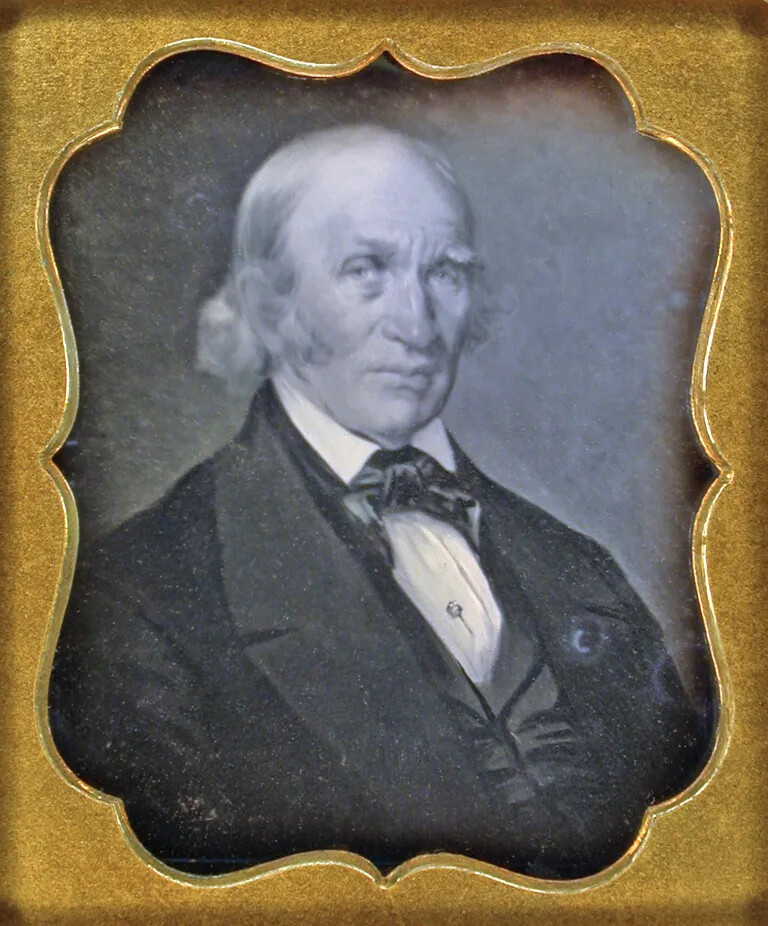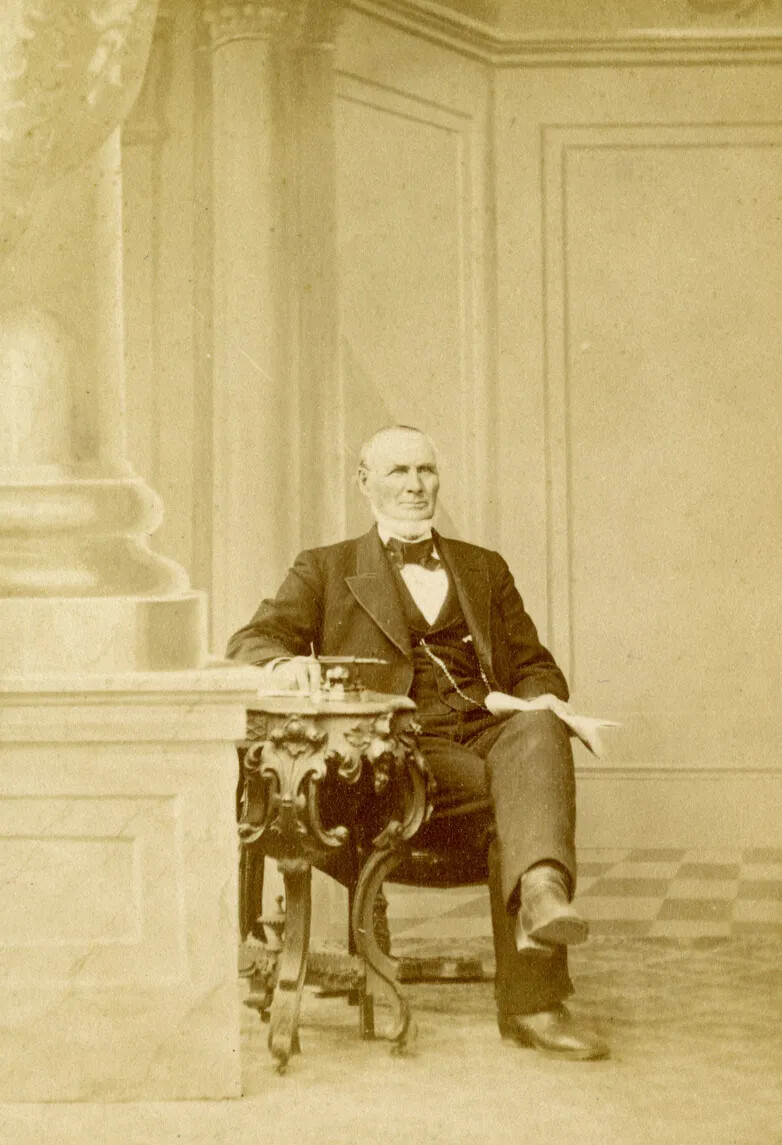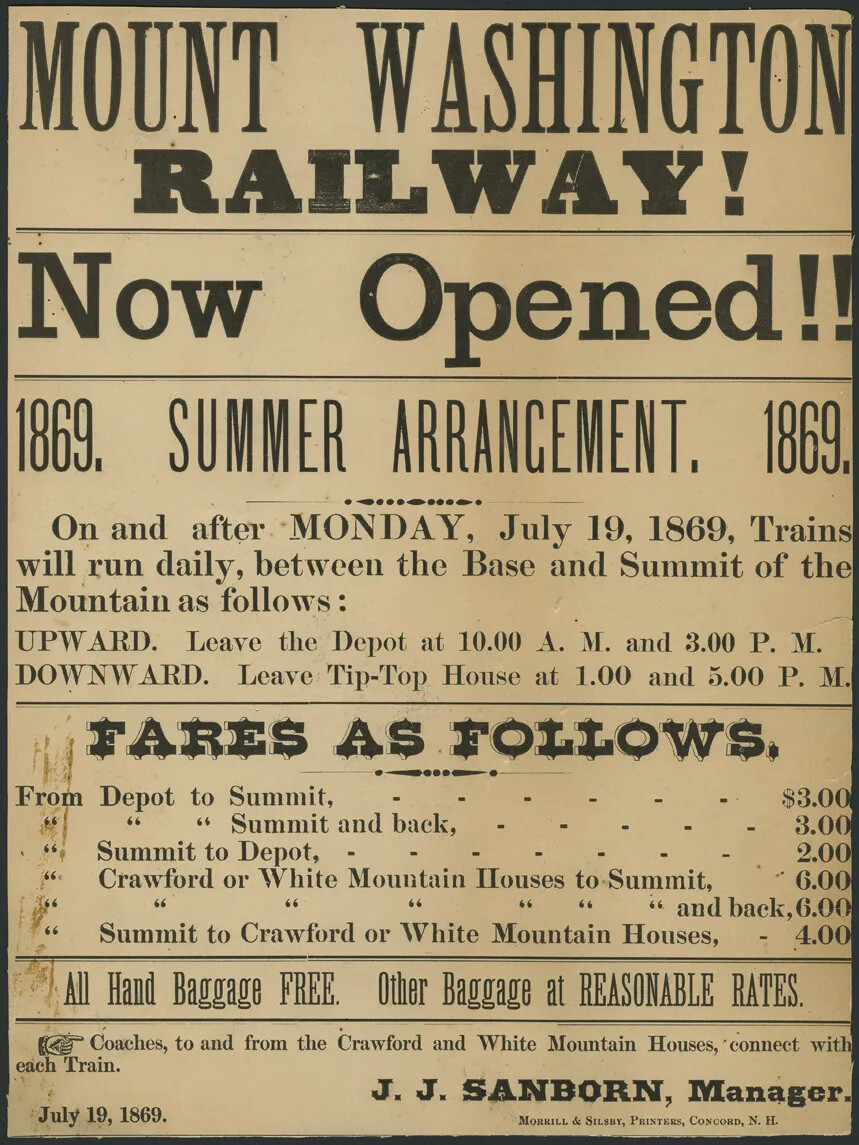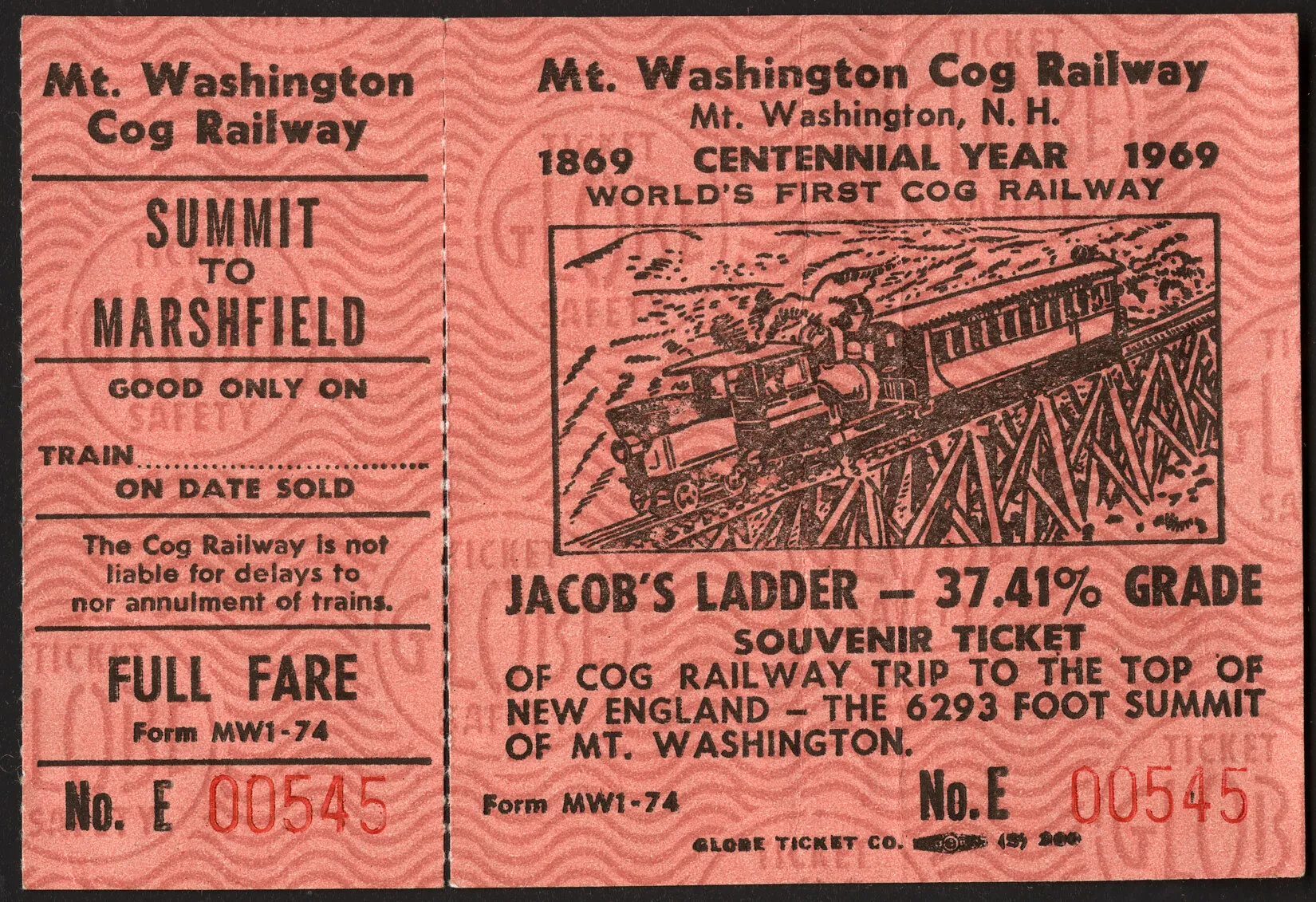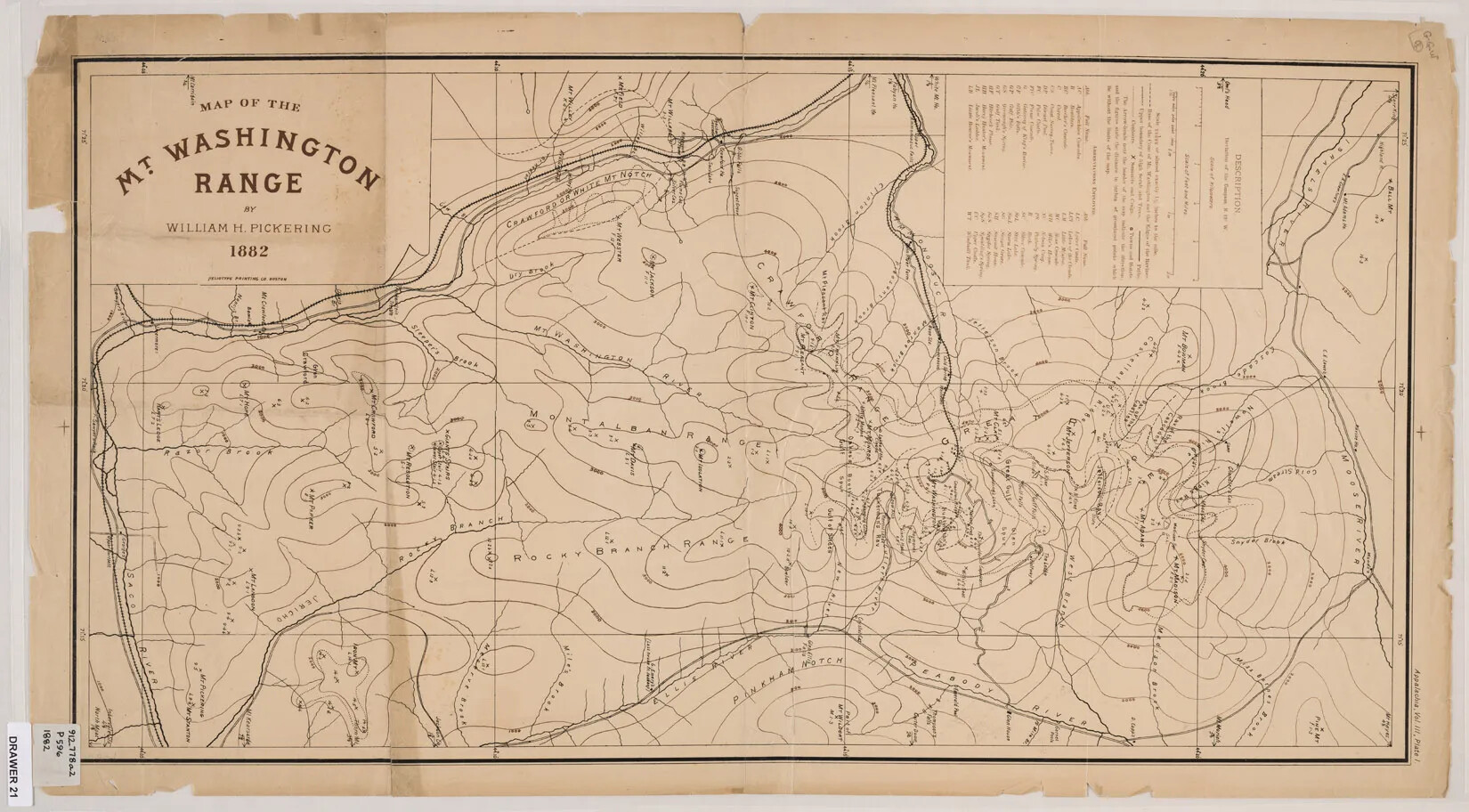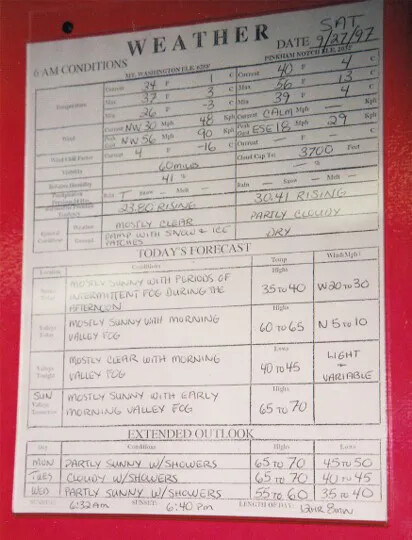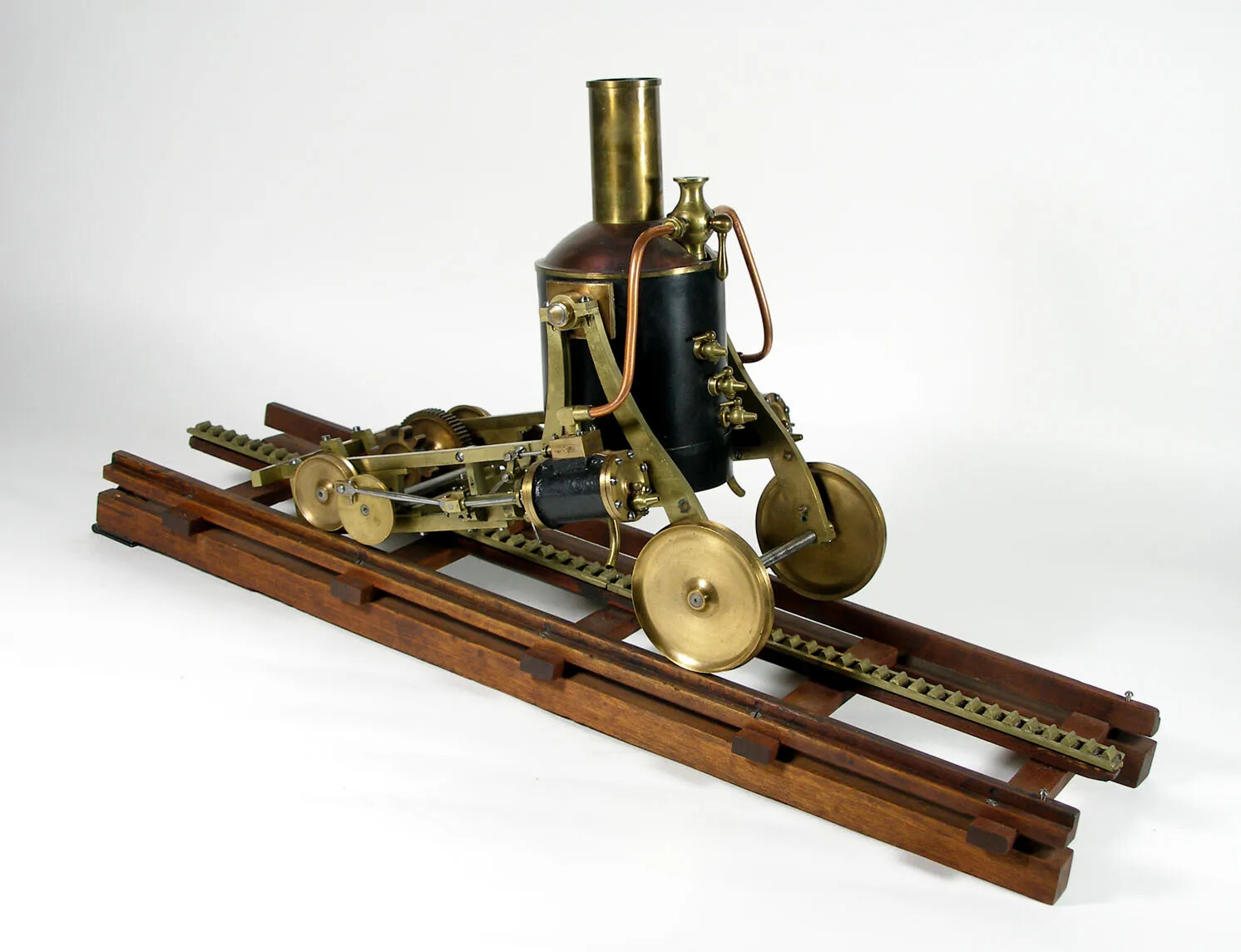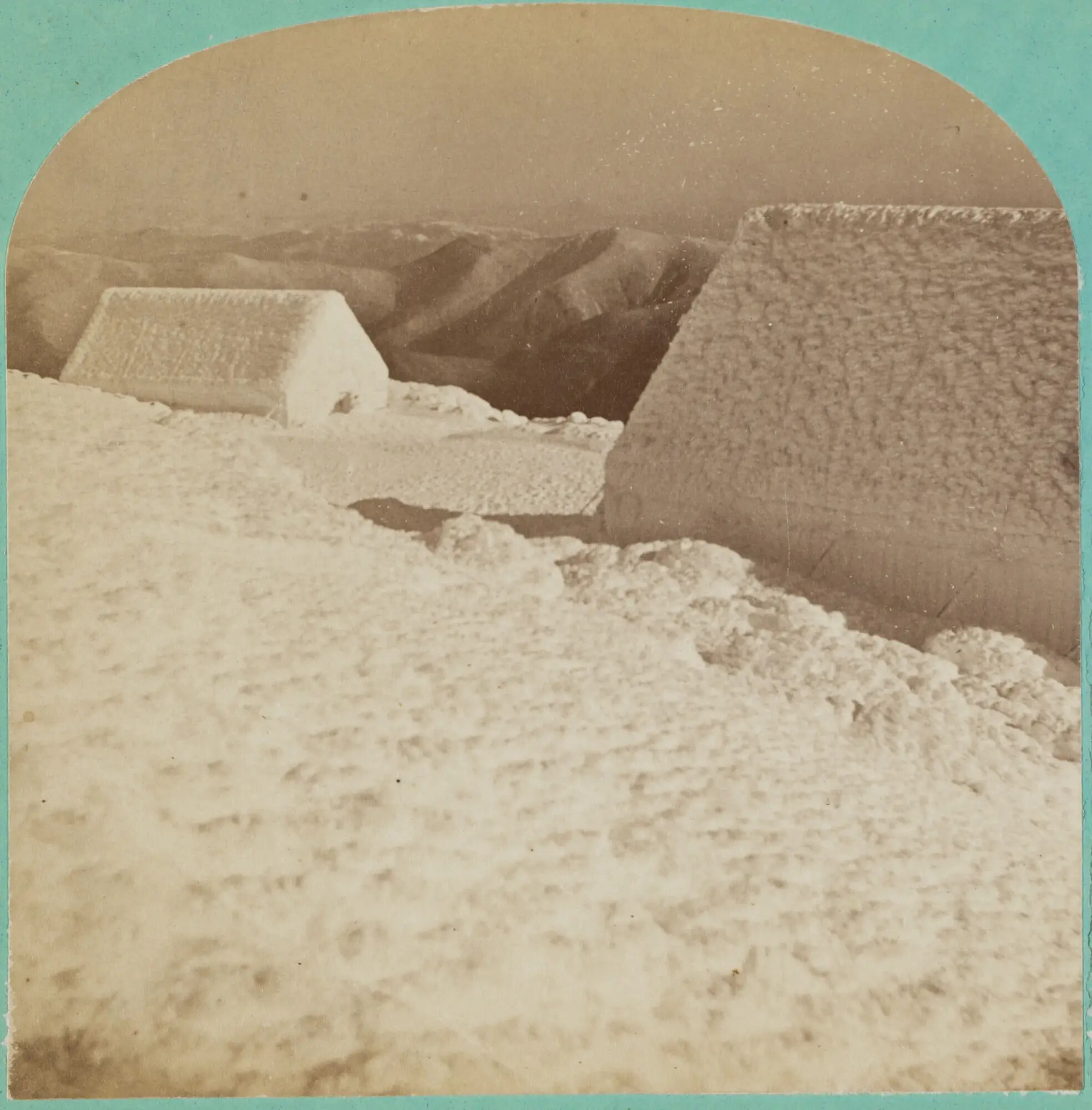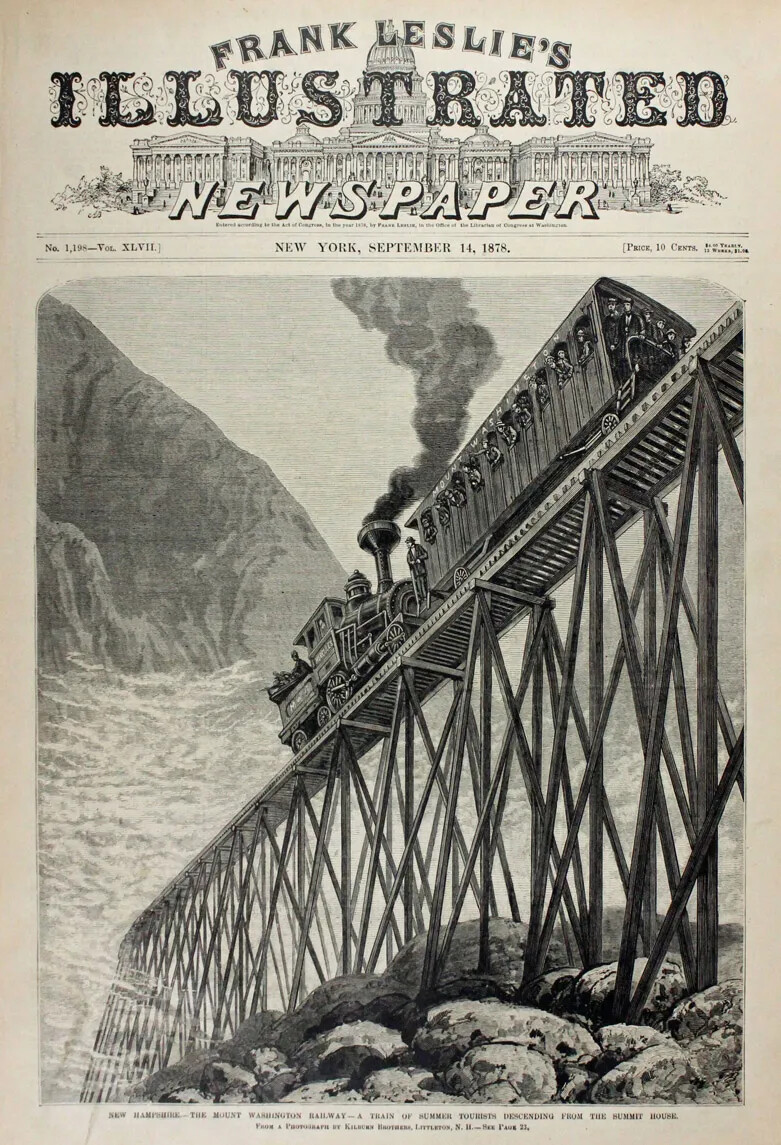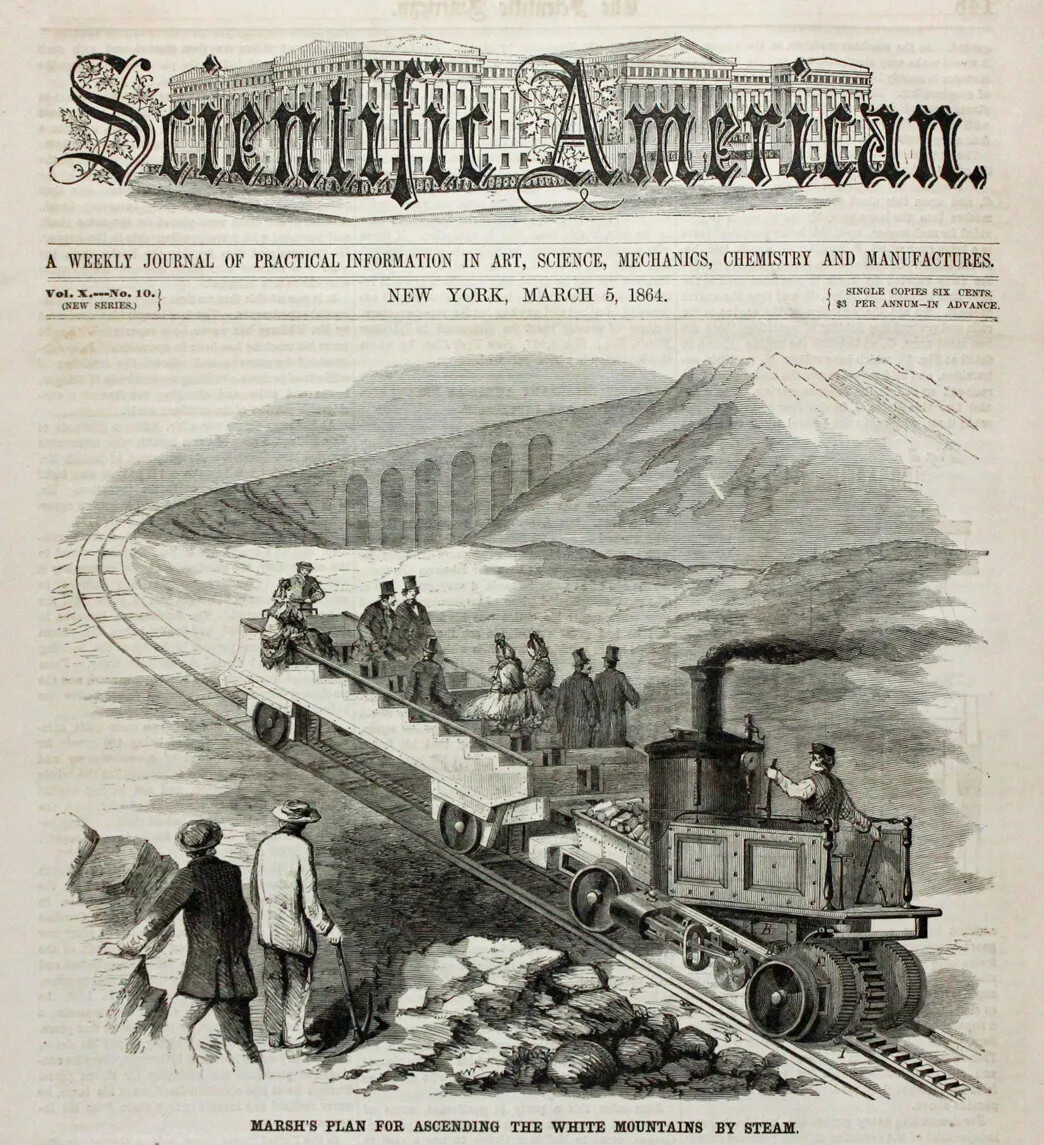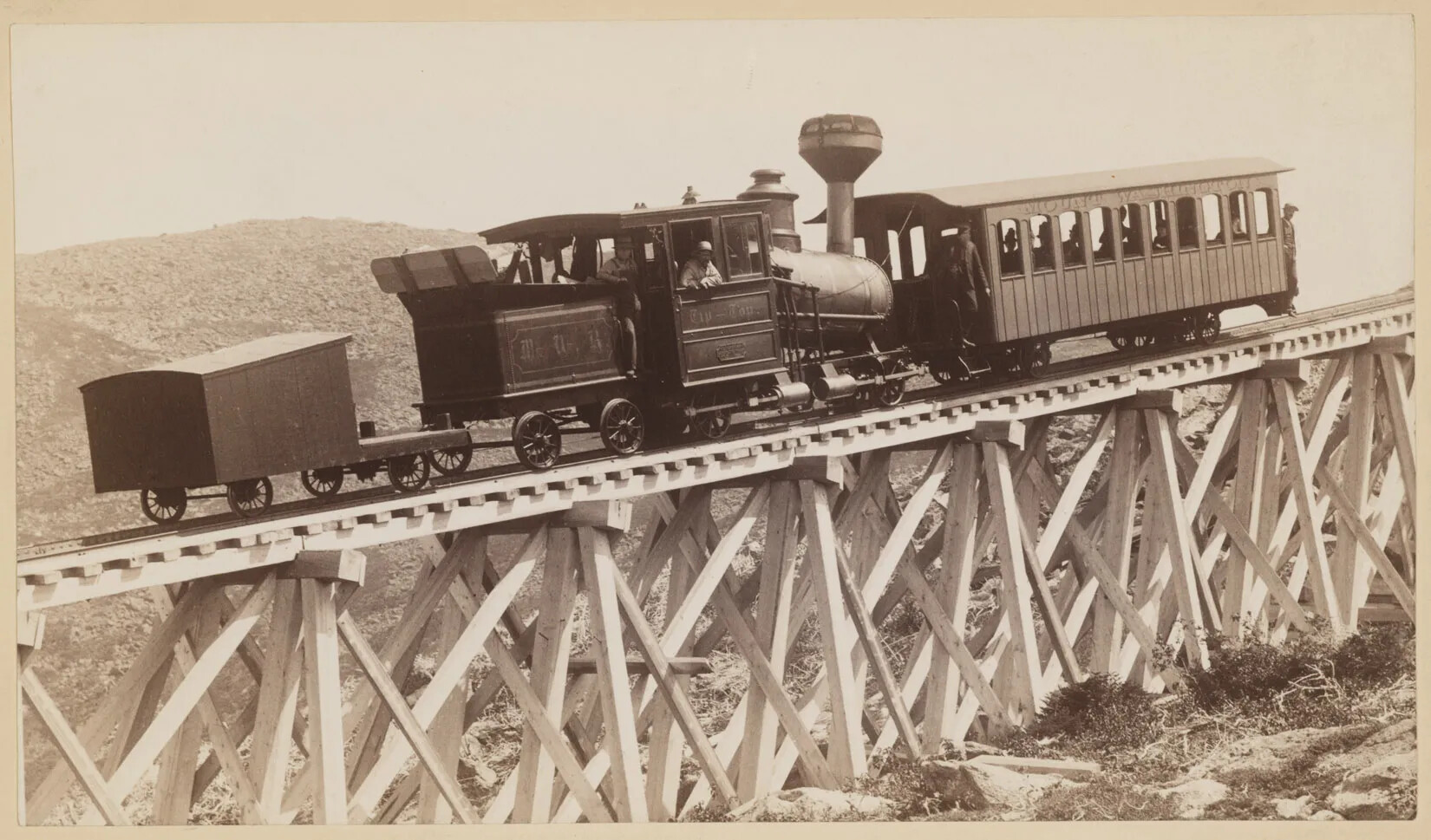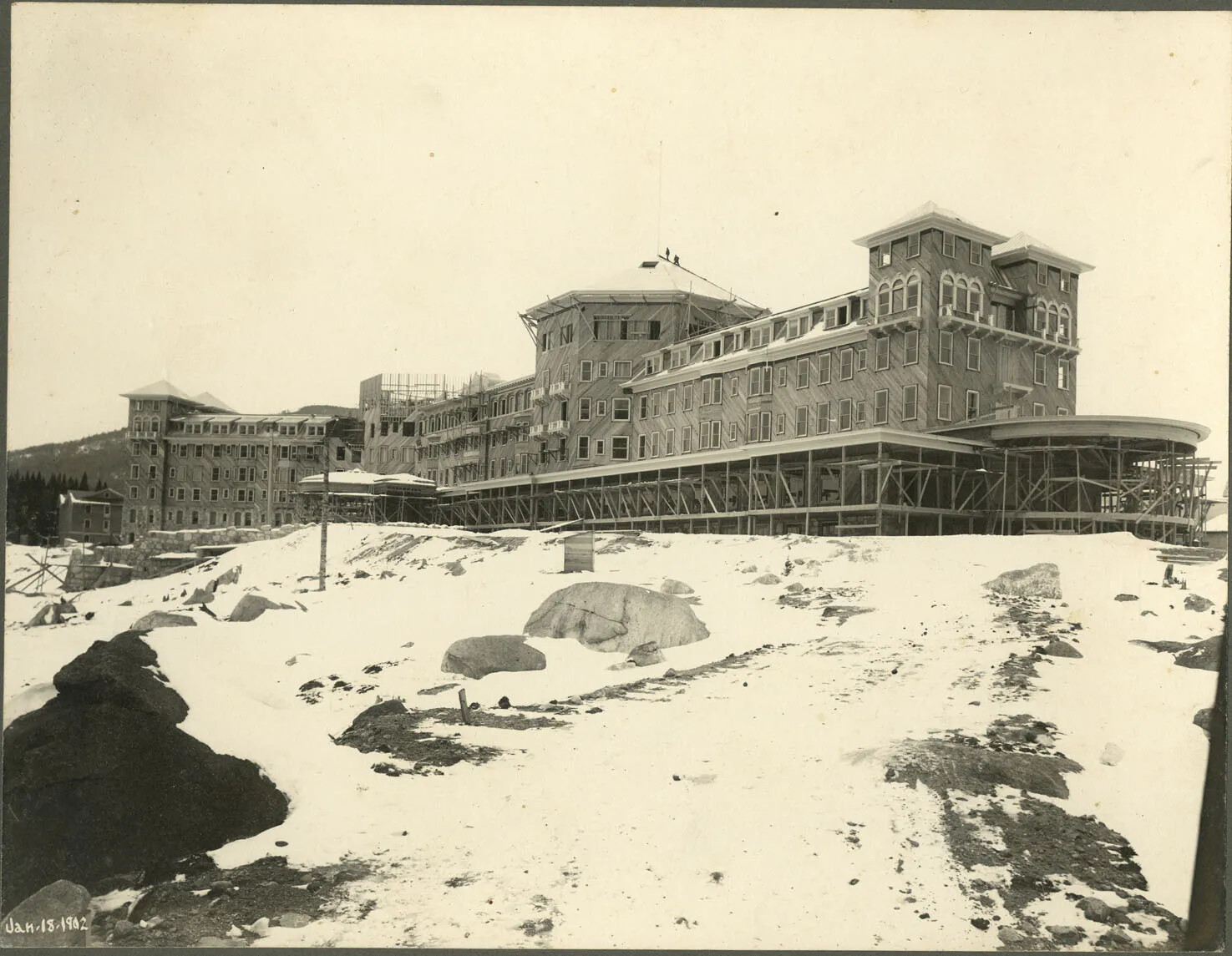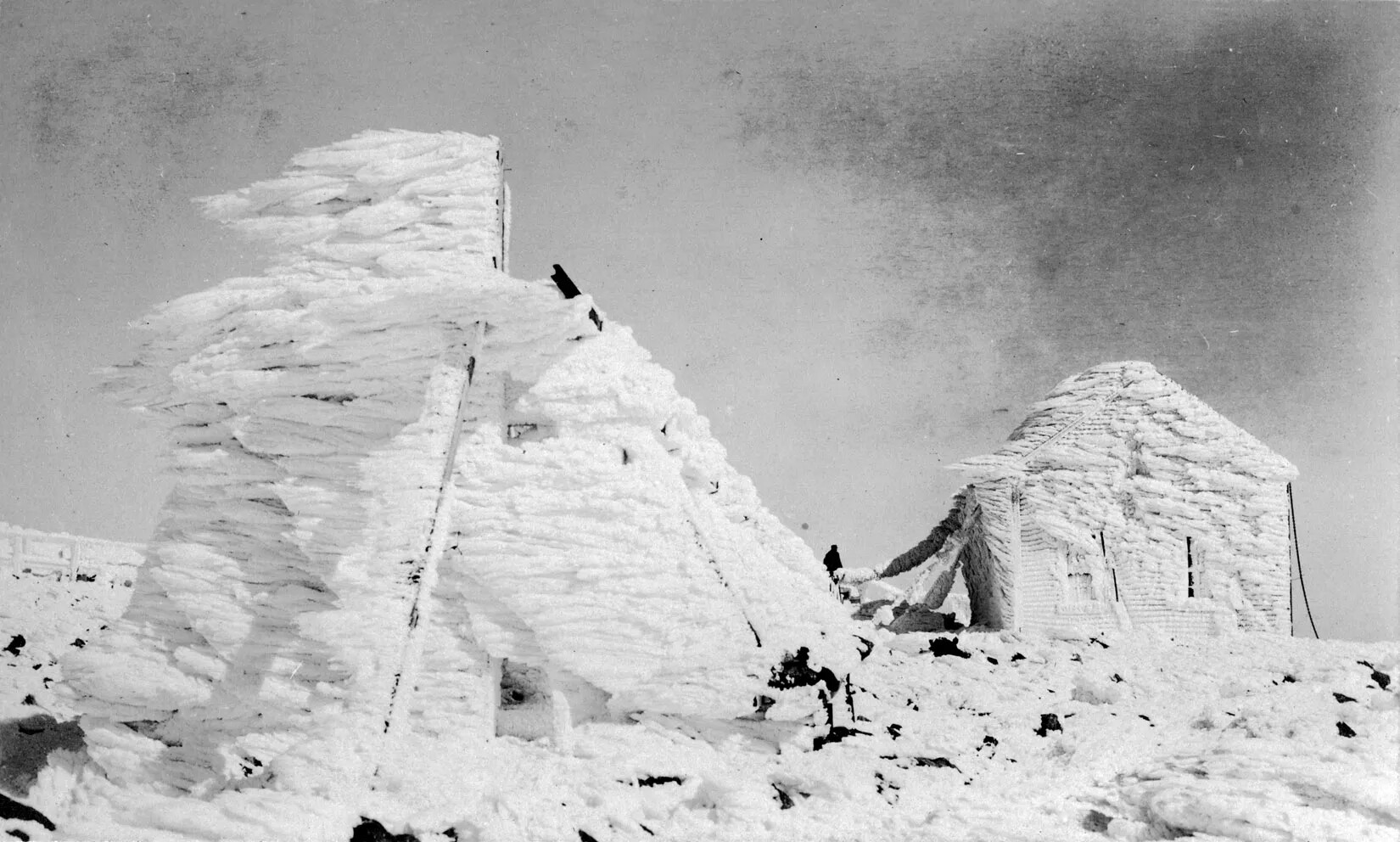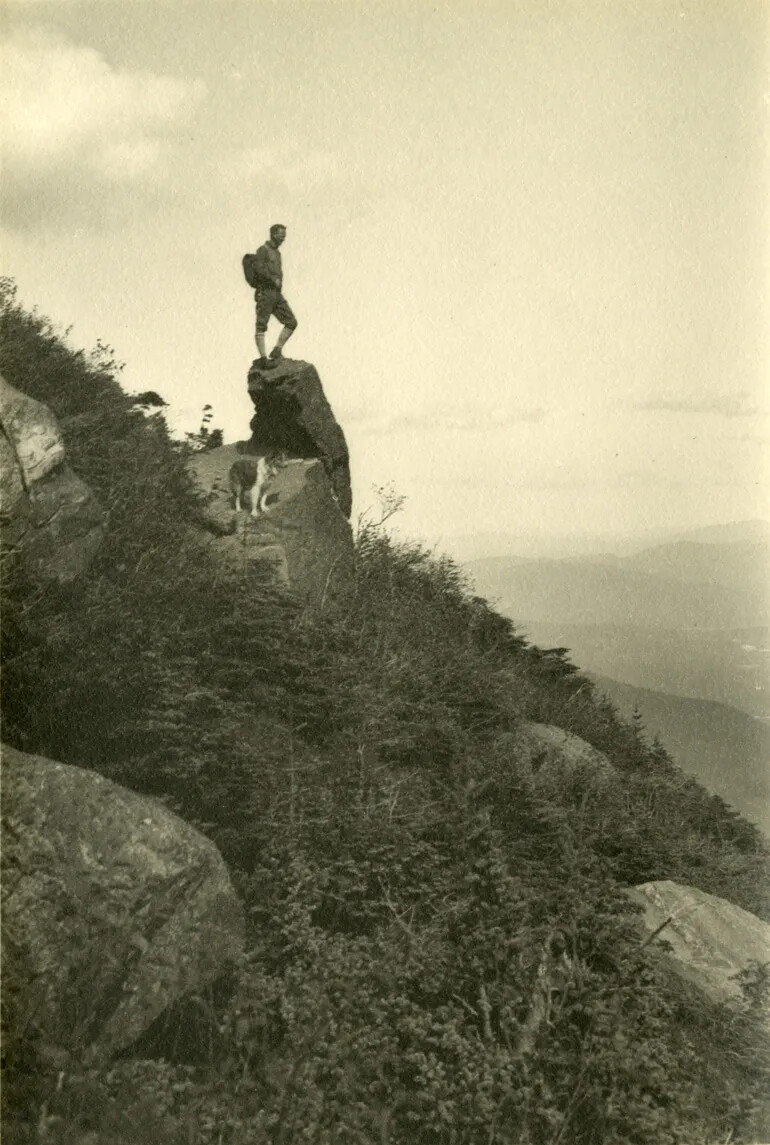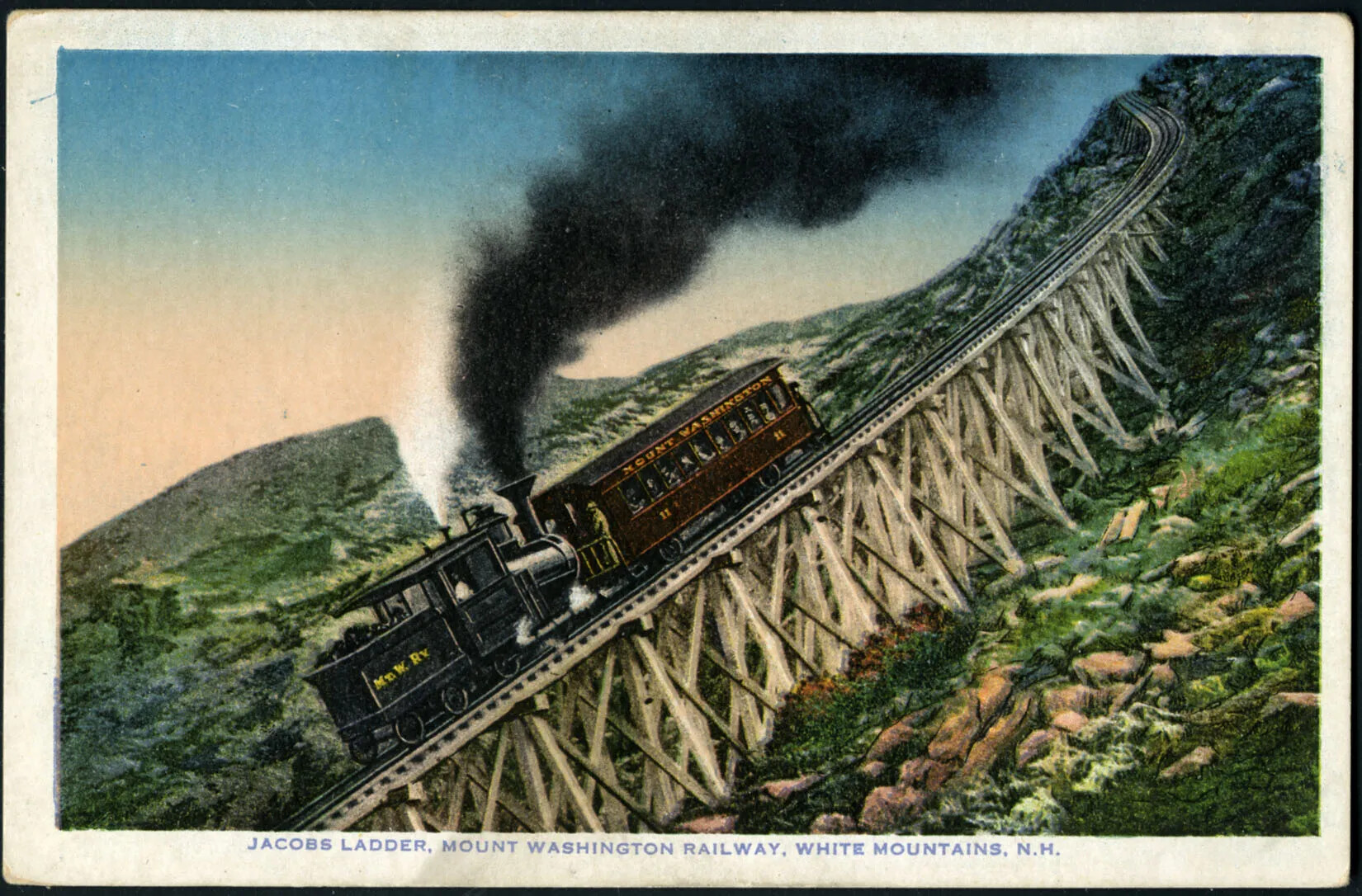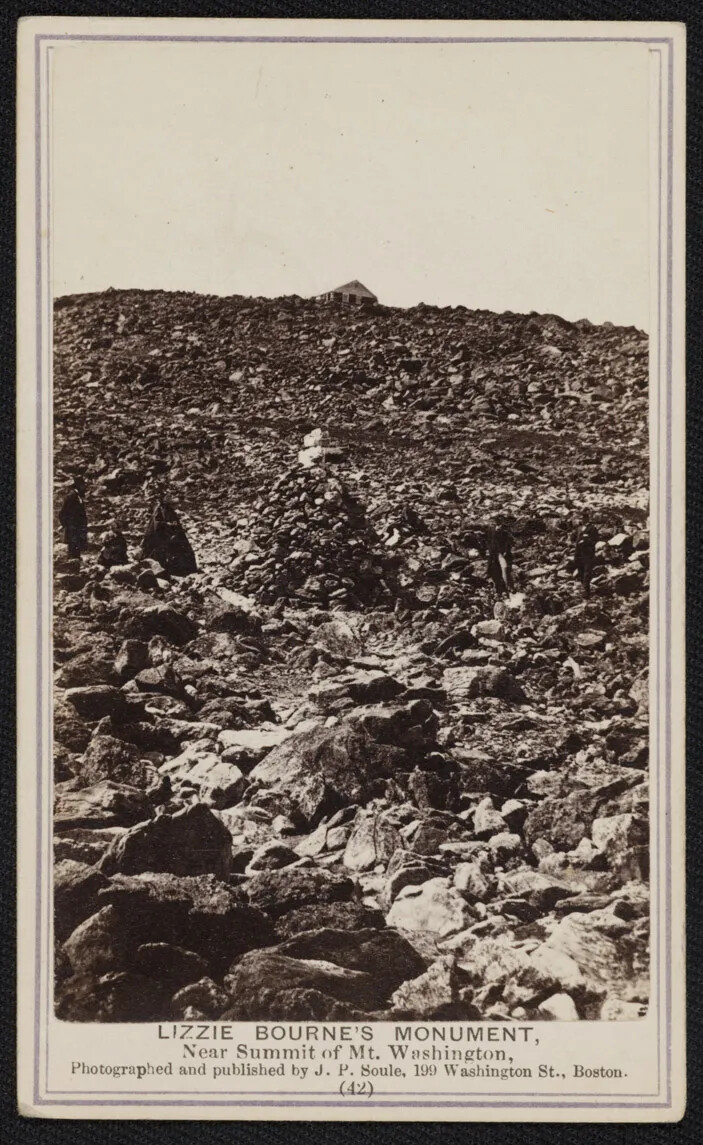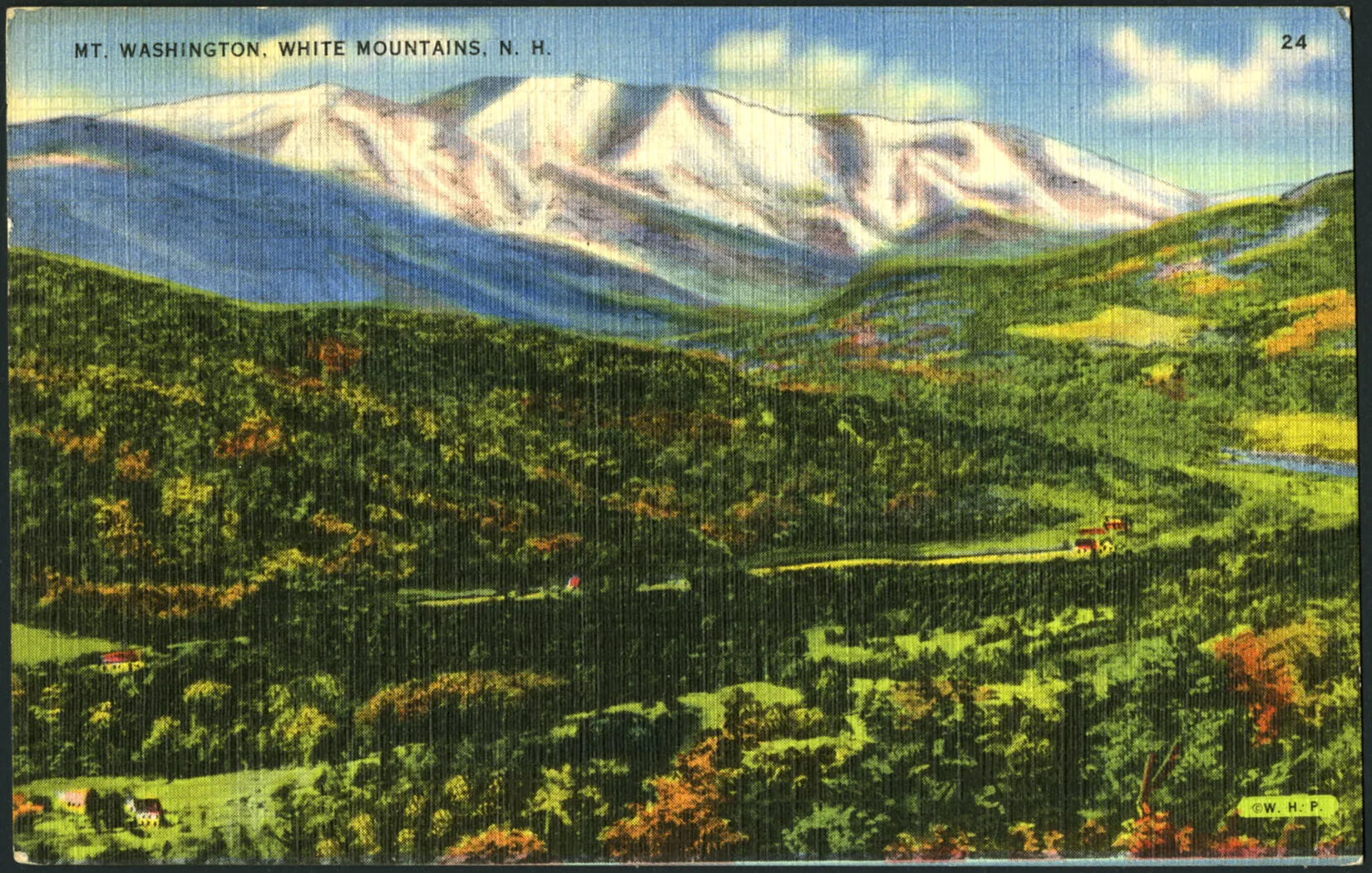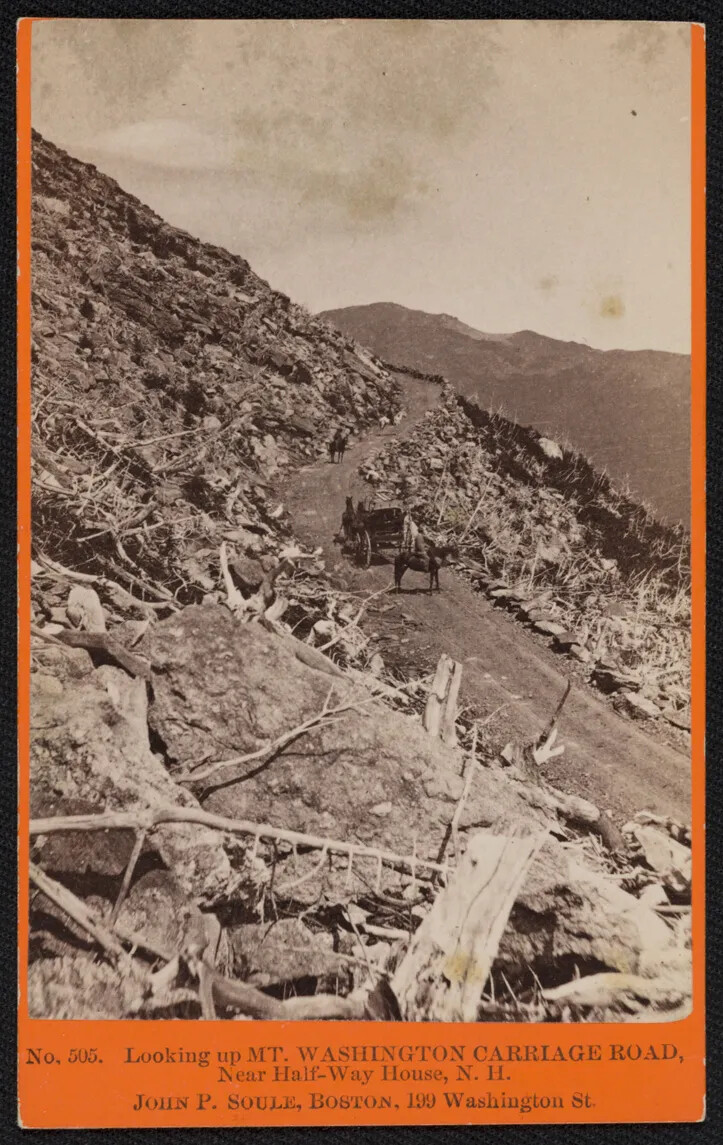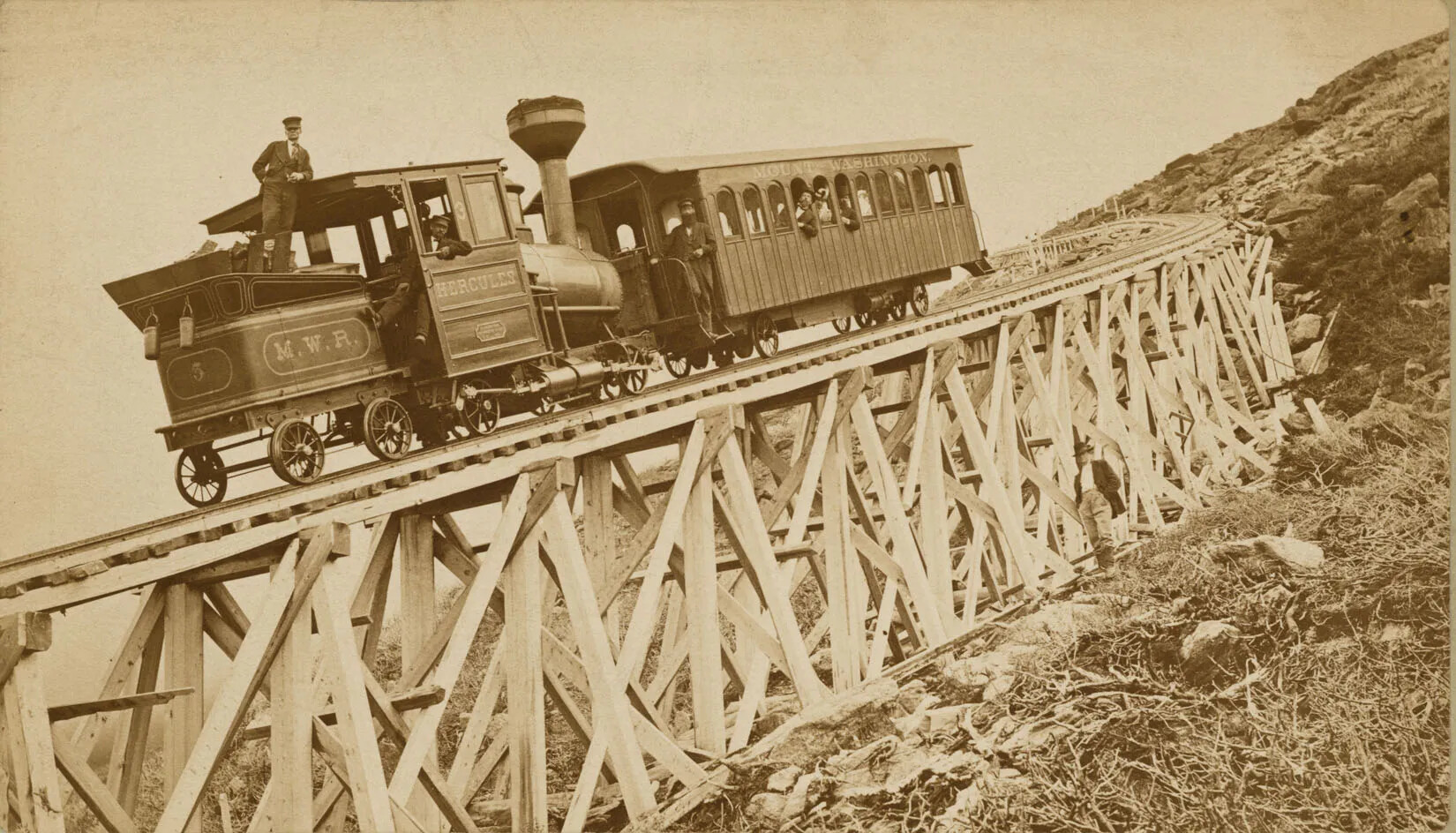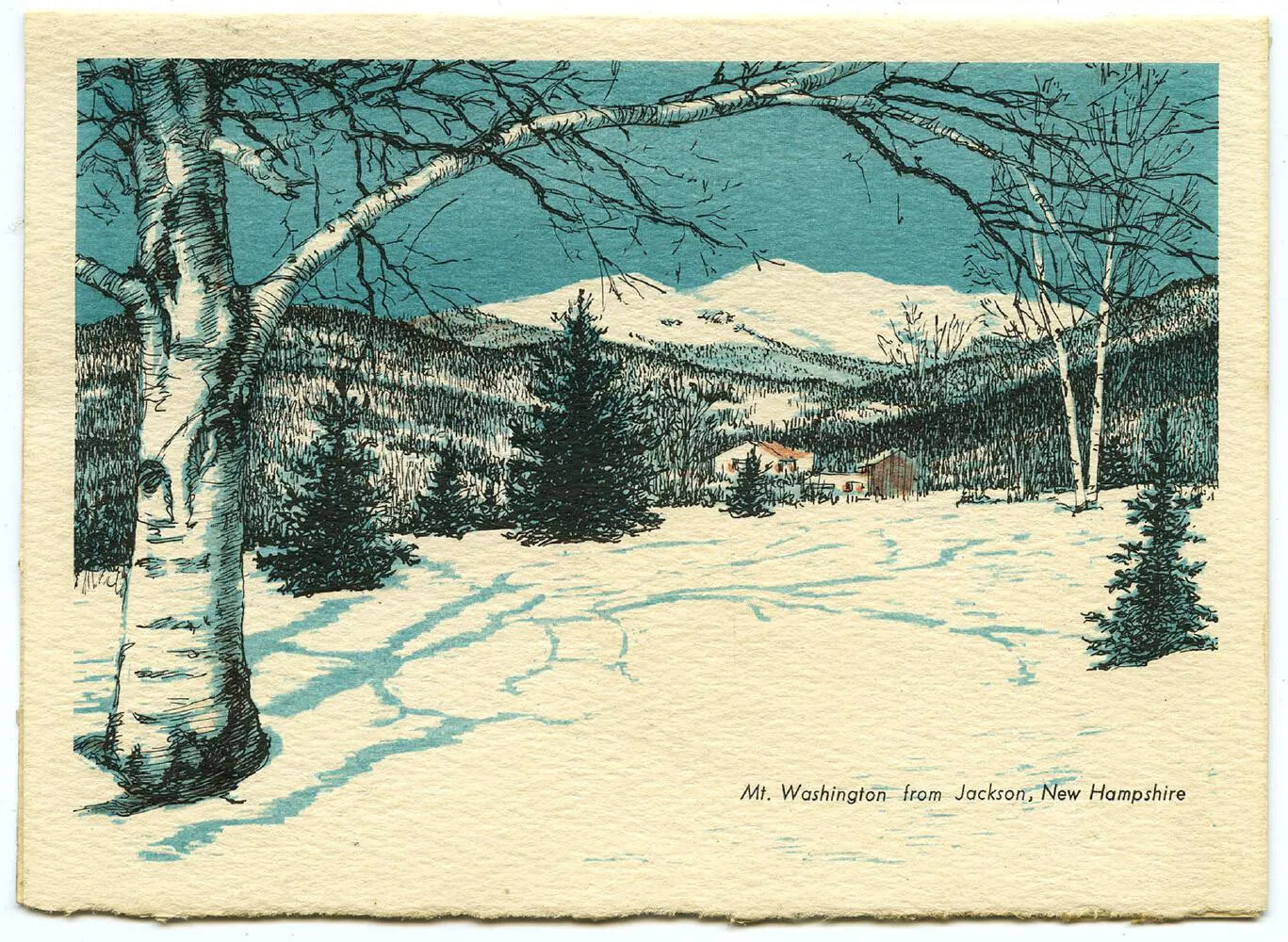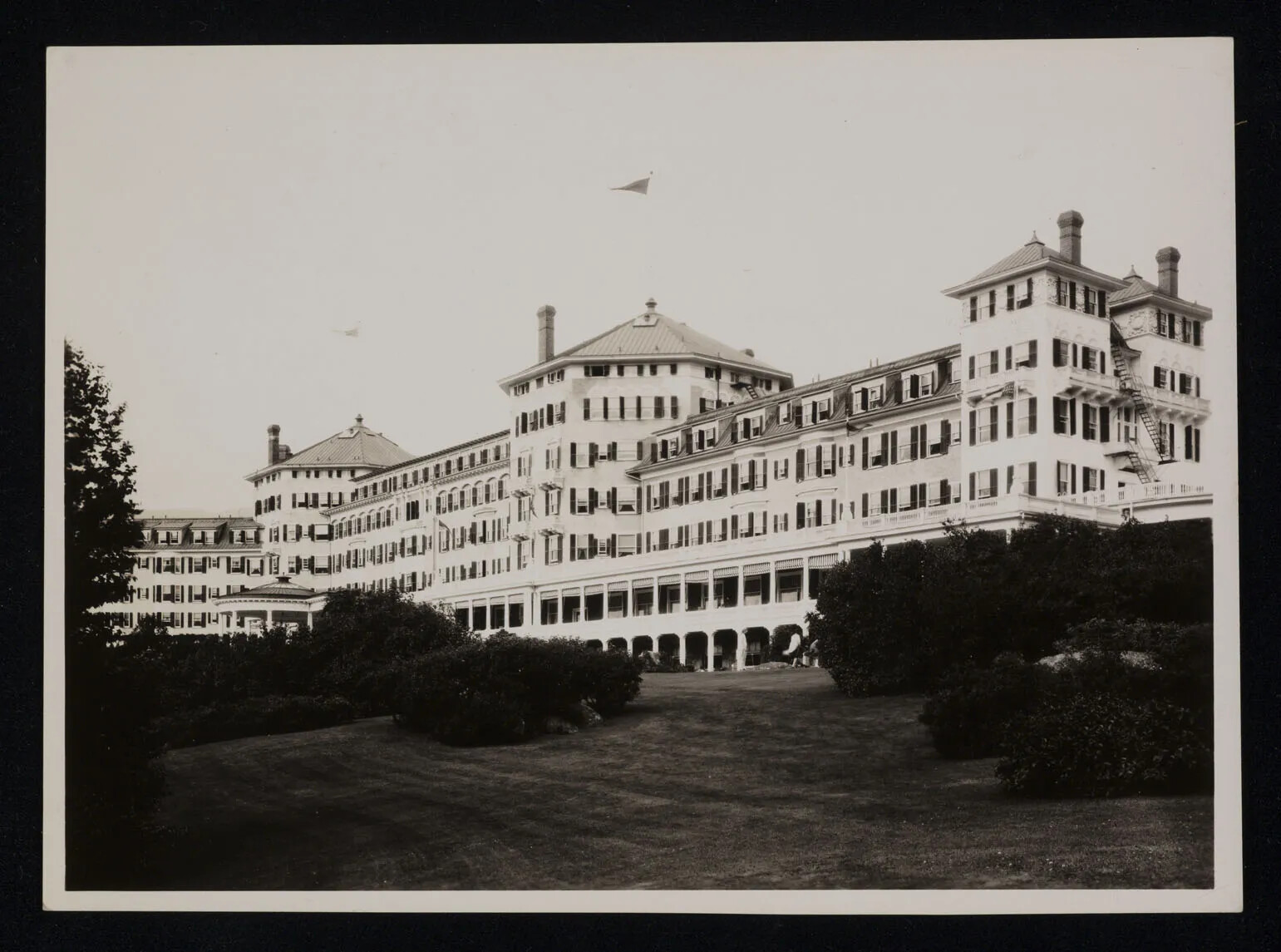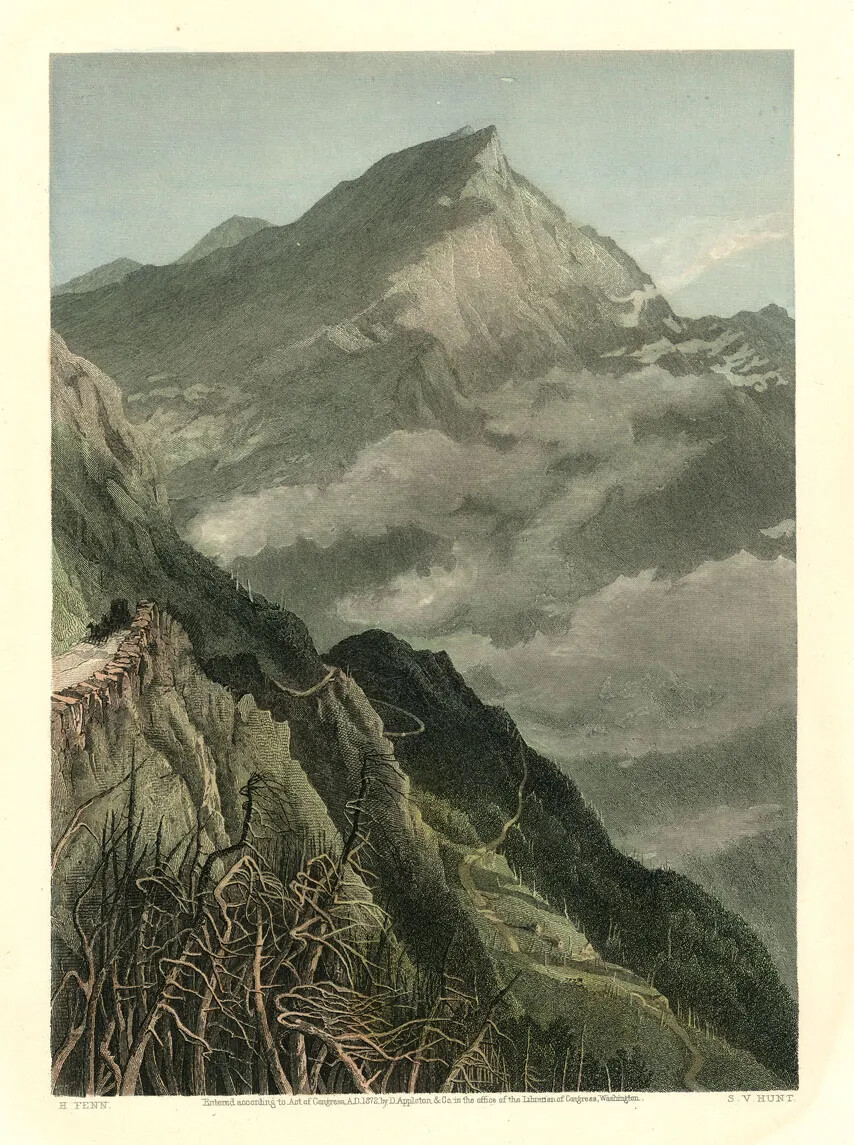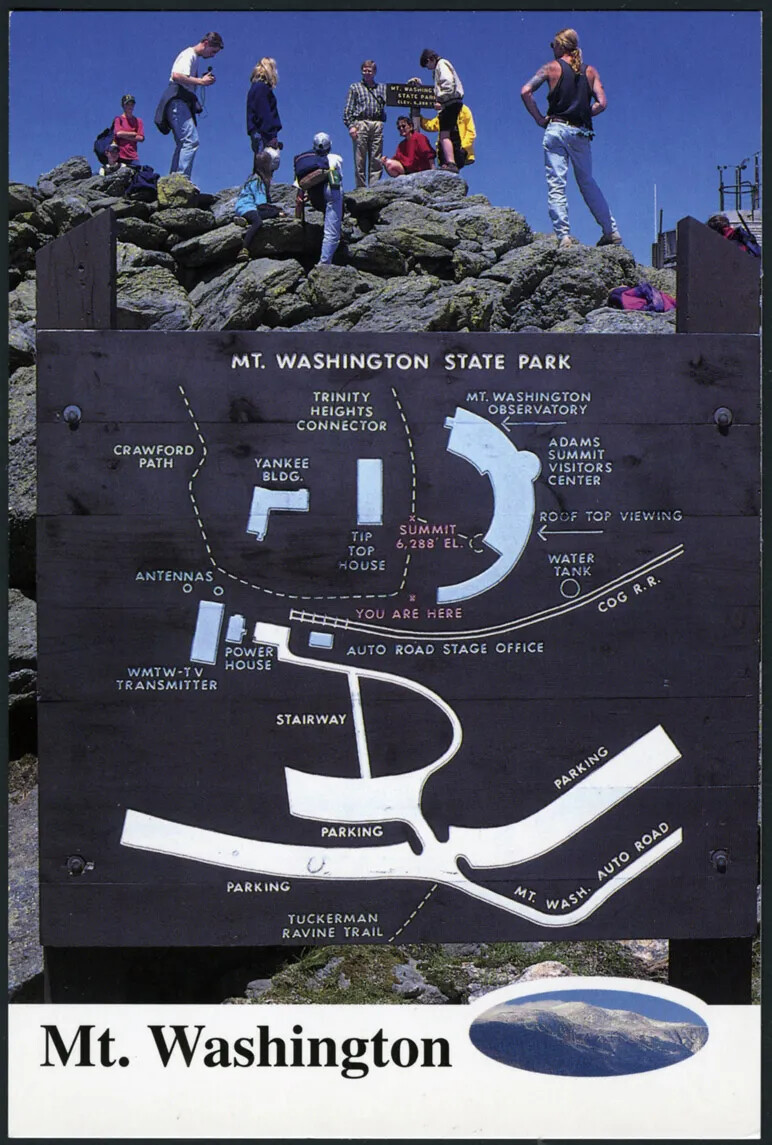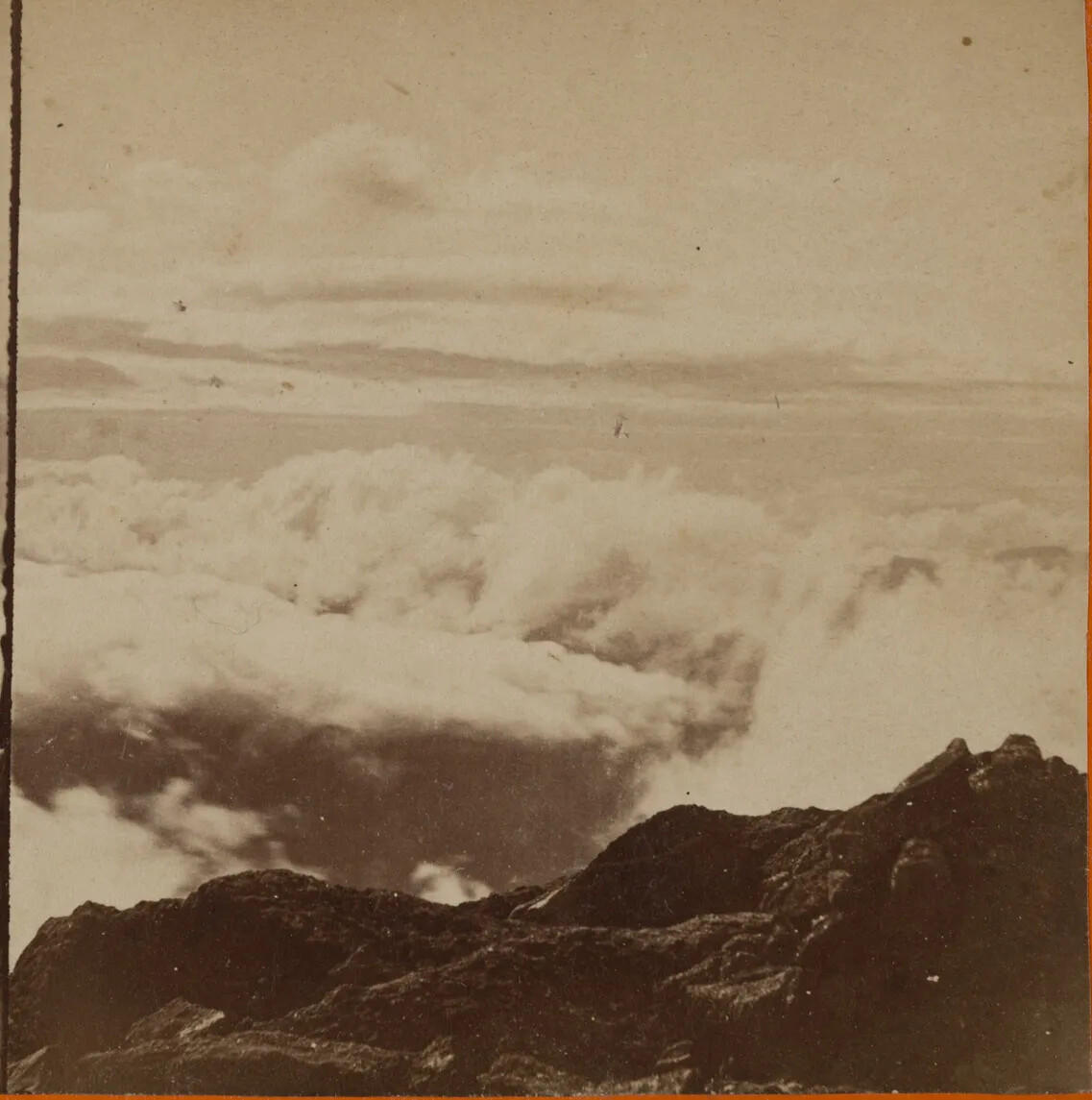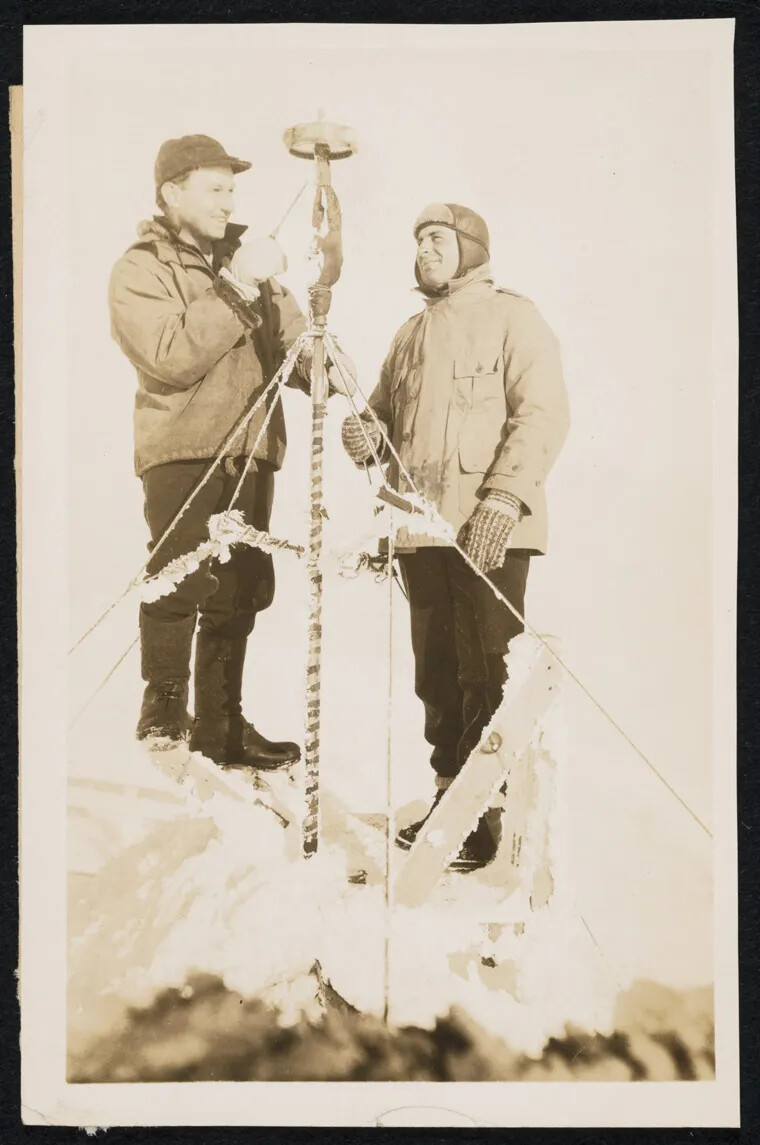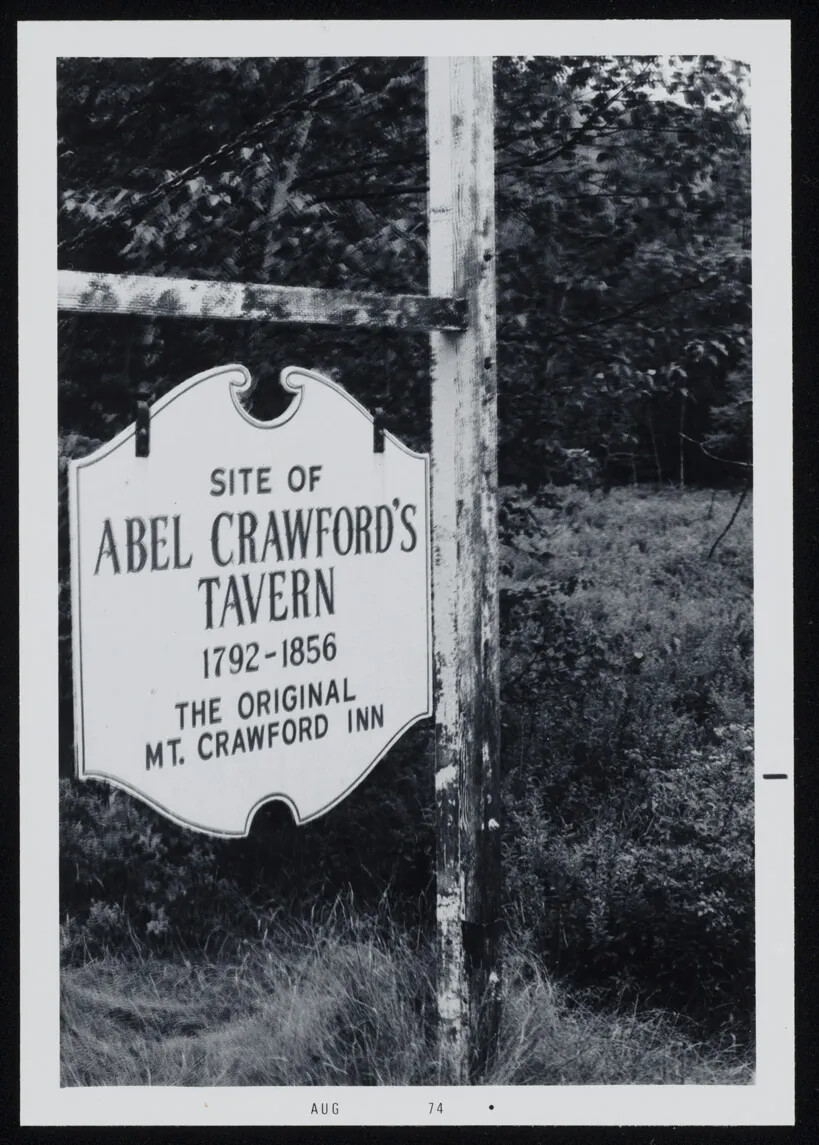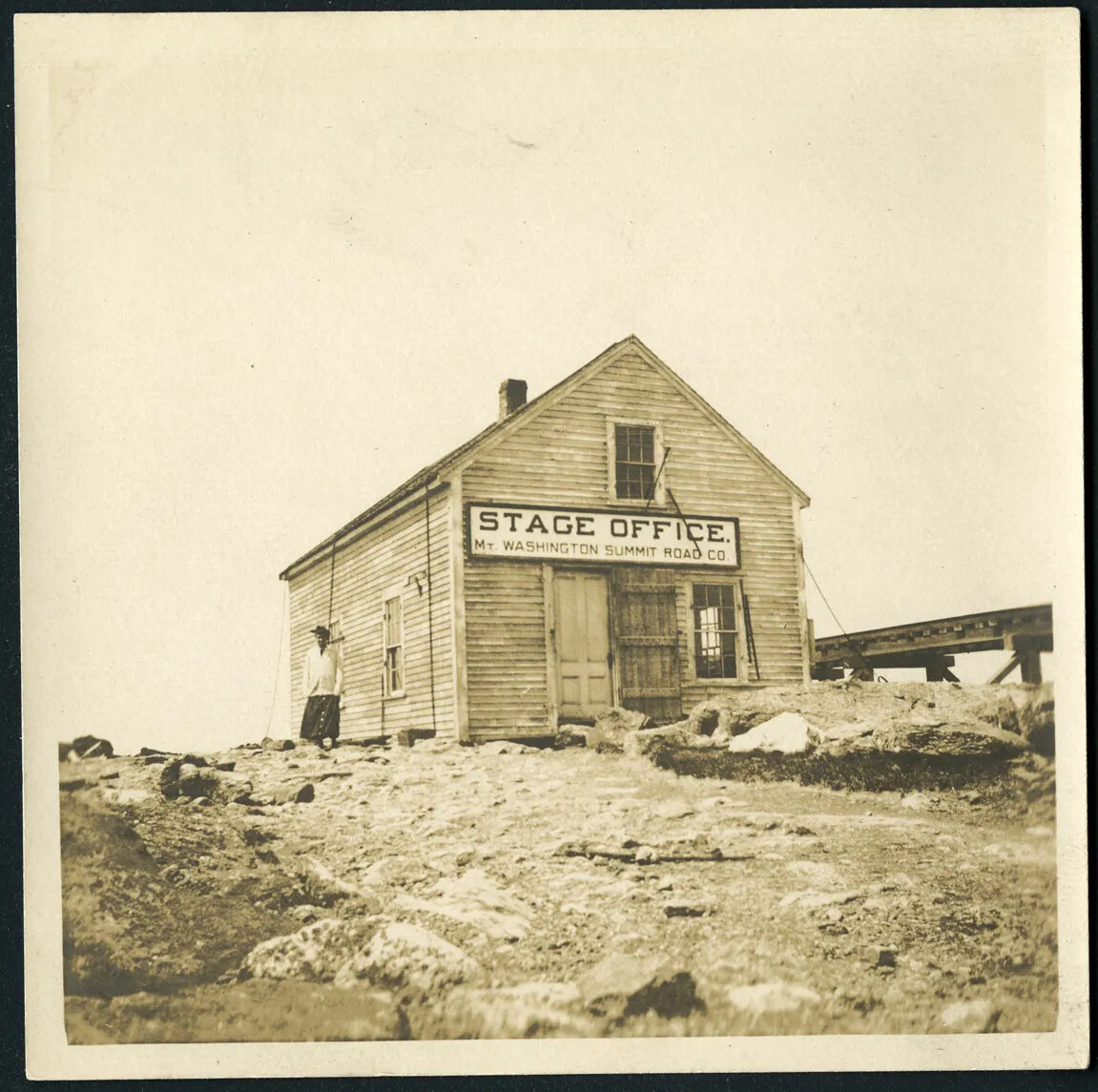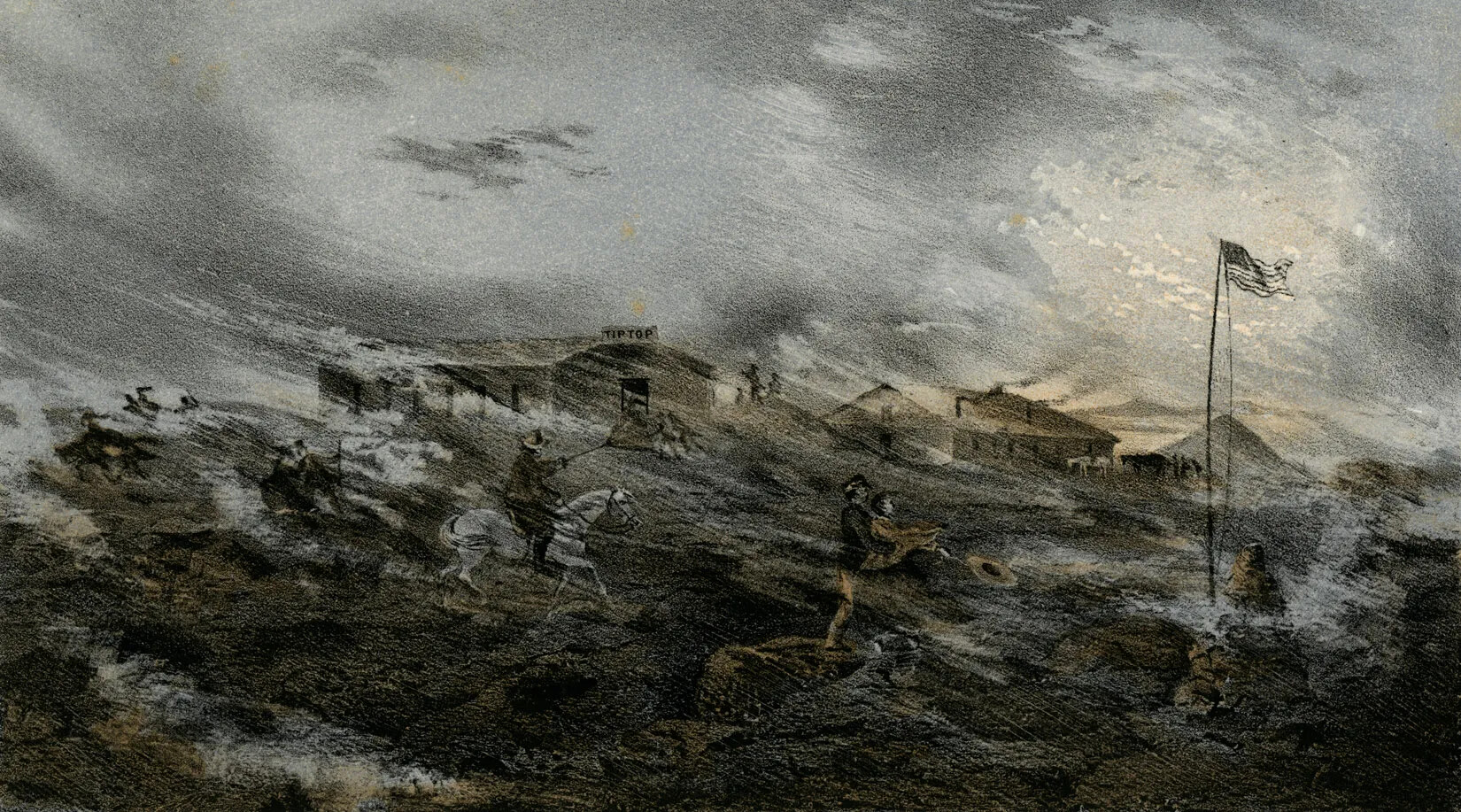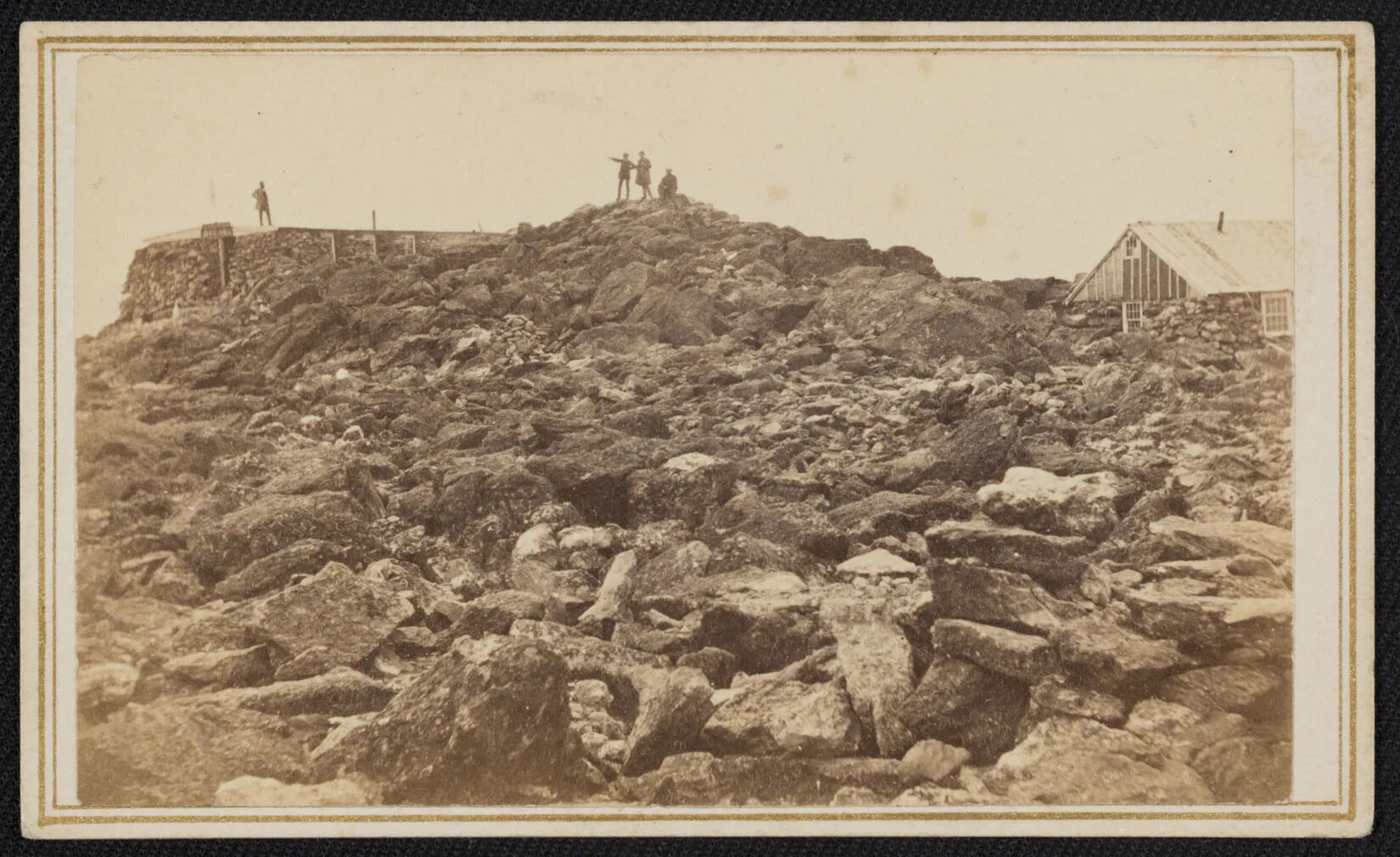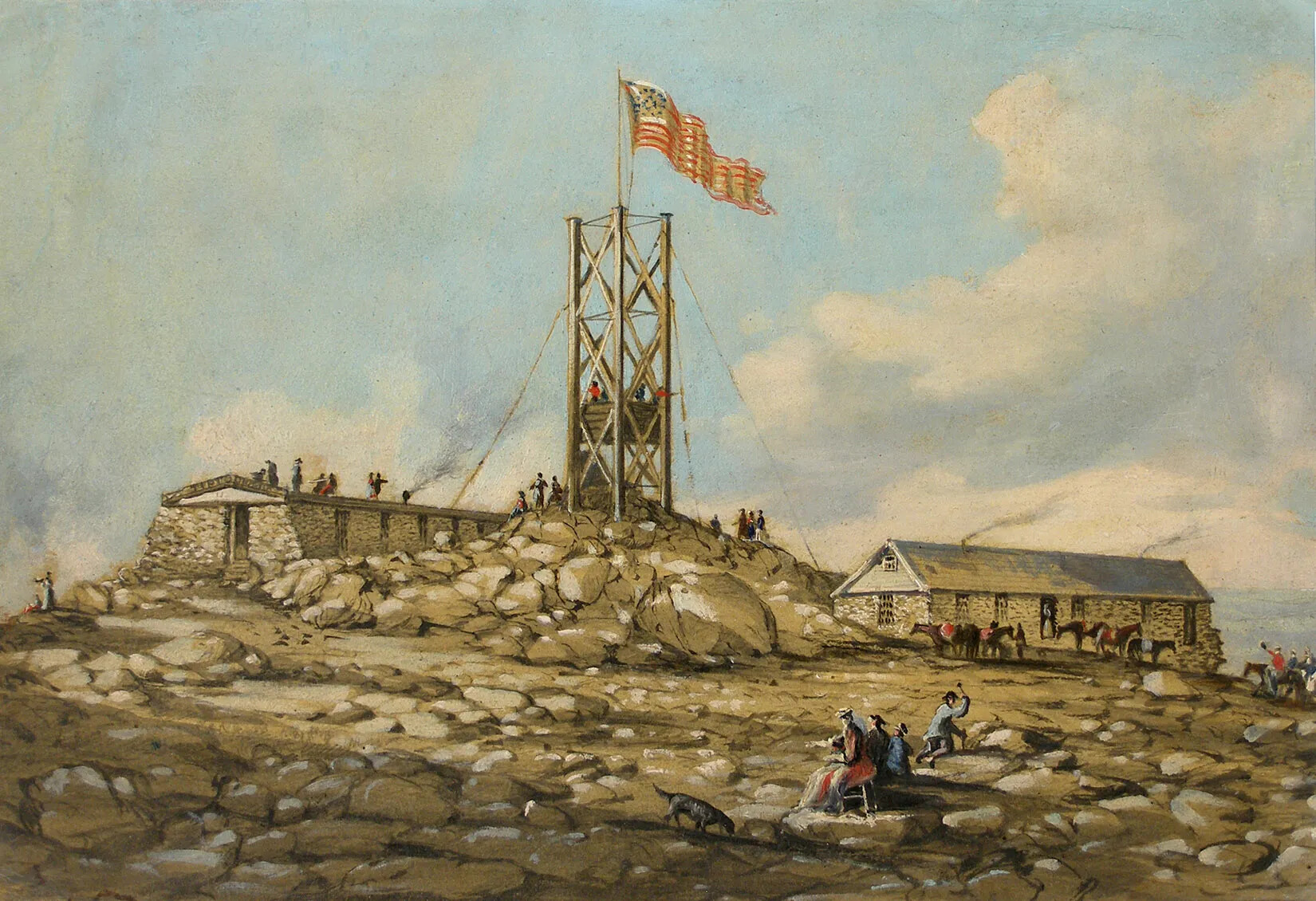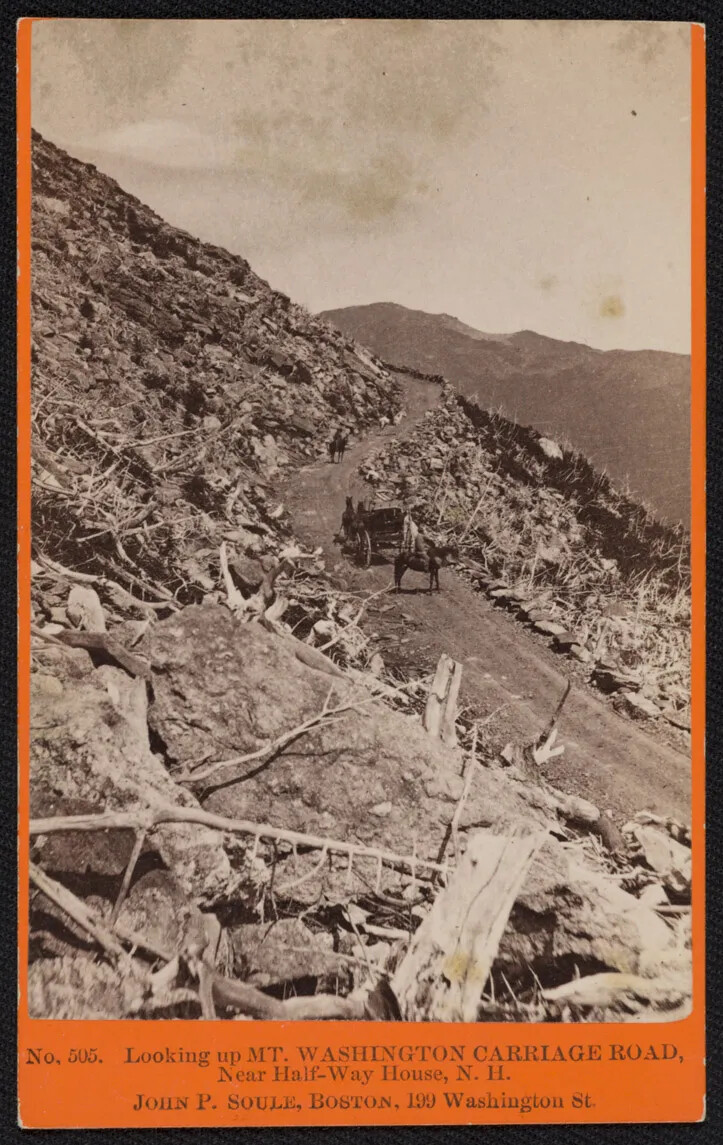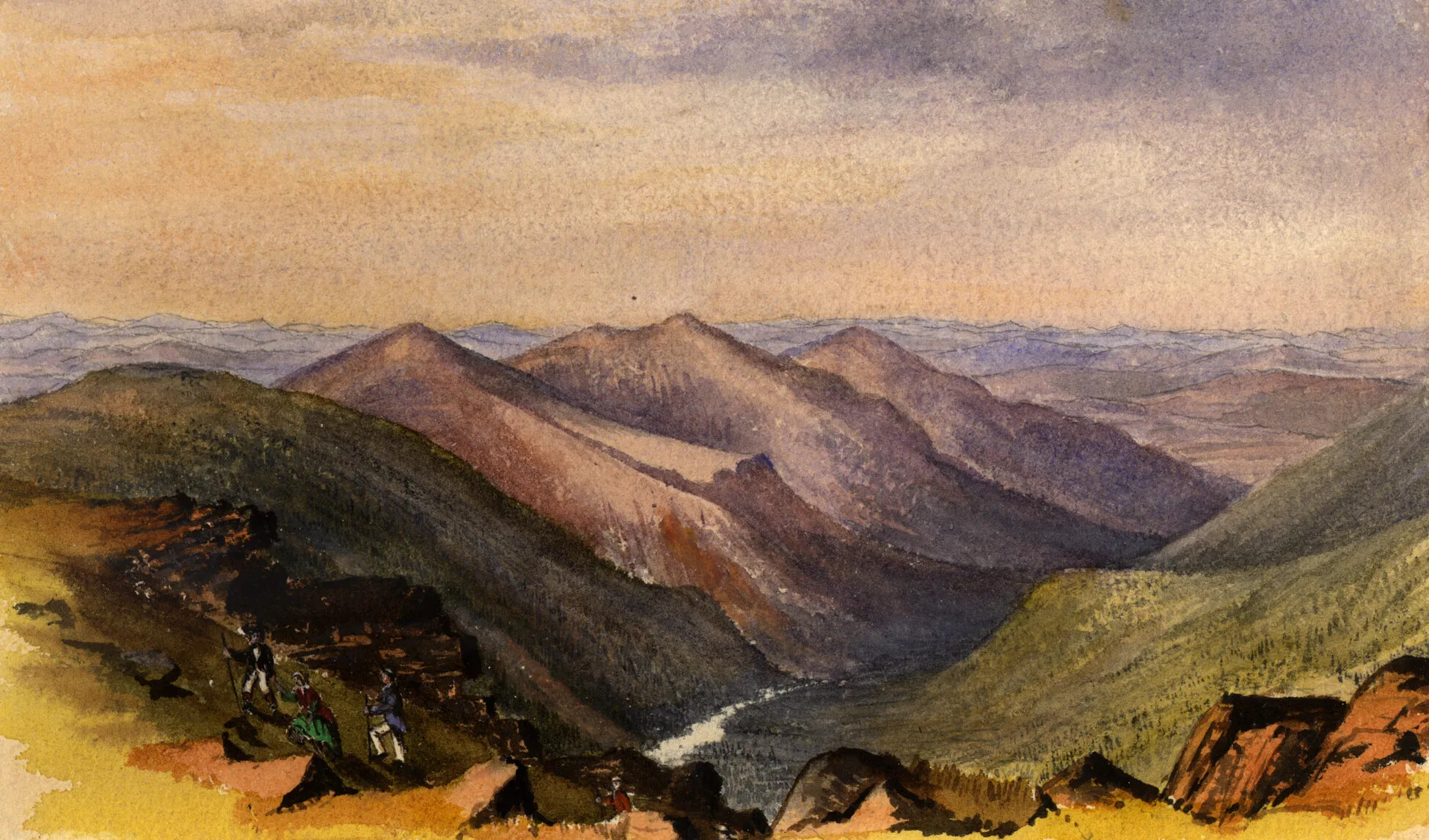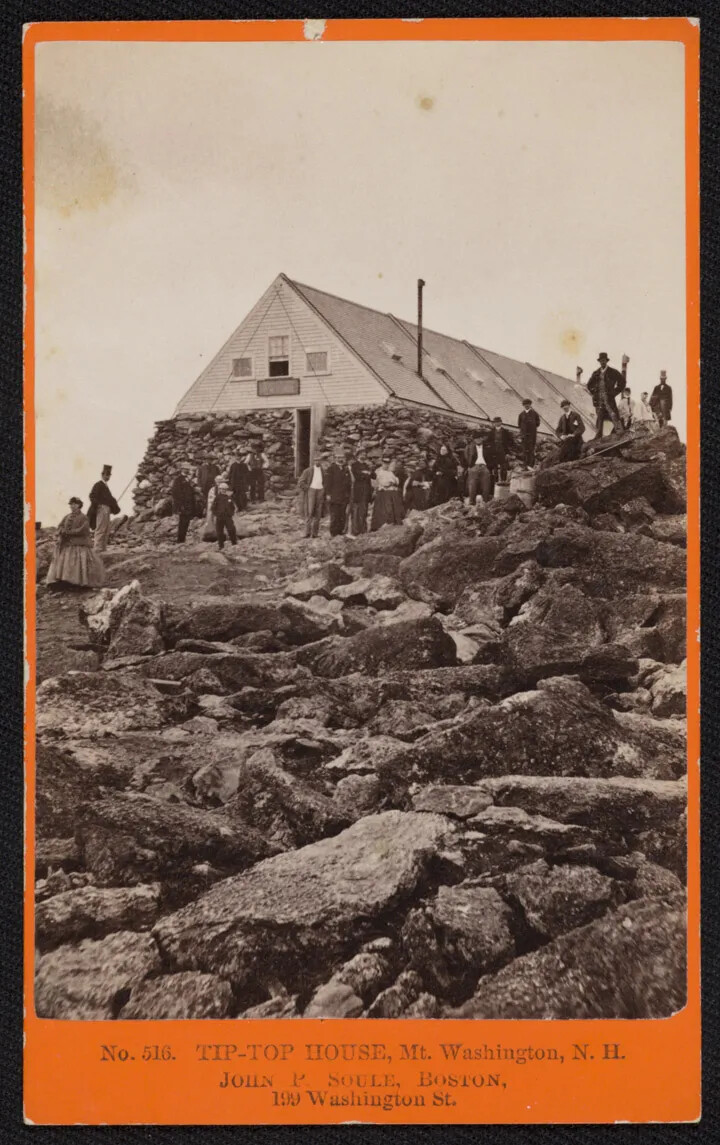Primary Source Set - Mount Washington
At 6,288 feet, Mount Washington is the highest mountain in northeastern North America. Located in the Presidential Range of the White Mountains National Forest, the area surrounding the summit and the summit itself, belongs to the Mount Washington State Park. This park is visited each year by over a quarter of a million people from all over the world. On a clear day, visitors to the summit can see into Maine, Vermont, Massachusetts, and New York, and sometimes even into Canada.
Background
The first written record of the mountain by Europeans was made by Italian explorer Giovanni da Verrazzano in 1524, after he viewed it from the Atlantic Ocean. Originally known as “Agiocochook” or “the place of the Great Spirit” by the Abenaki, the mountain was considered the home of the gods and subsequently never climbed. In 1642, Darby Field of Durham became the first European to climb the mountain. He may have been motivated by rumors that there were gems at the summit. When Field’s quest failed to turn up any precious stones, the English settlers lost interest in the mountain. It was officially named Mount Washington in 1784 by geographer Manasseh Cutler, in honor of the beloved general from the American Revolution.
In 1819, Abel Crawford and his son Ethan Allen Crawford built a footpath from Crawford Notch to the summit of the mountain, which is now the oldest maintained footpath in the United States. The summit remained largely undeveloped until the mid-1800s, when it began attracting large numbers of tourists. In 1852, the Summit House opened its doors on Mount Washington’s peak and was soon followed by the Tip Top House. Although the Summit House was destroyed in a fire in 1908, hikers today can still visit the Tip Top House, now a state historic site and museum.
Climbing the mountain on foot was no easy feat for visitors in the mid-1800s, and deaths were not uncommon among hikers who were caught by surprise by the changeable weather. The 1855 death of Lizzie Bourne, a young woman who perished just feet from shelter at the summit during a sudden storm, brought a great deal of attention to Mount Washington. A carriage road was completed in the early 1860s, and later that same decade, in 1869, the Cog Railway opened to the public. This mountain-climbing train, invented by businessman Sylvester Marsh, offered visitors a fast, risk-free way to ascend to the summit and enjoy the views. It has been a popular tourist destination ever since, especially after the 1902 construction of the luxurious Mount Washington Hotel, nestled at the foot of the mountain.
Mount Washington is also known for its weather extremes. The highest temperature ever measured at the summit was 72º F and the lowest was -47º F. The highest wind speed ever (231 miles per hour) was recorded by a team of scientists at the Mount Washington Observatory on April 12, 1934. The weather observatory, founded in 1932, is a nonprofit institution that monitors the subarctic climate of the mountain. It has adopted the slogan, “Home of the World’s Worst Weather.” The weather station is staffed continuously by two alternating crews who live at the observatory in one-week shifts. The crews perform research experiments, conduct educational programs, issue daily radio reports, and take hourly weather observations. These observations are then sent to the National Weather Service to help forecast the weather for the rest of the region.
Mount Washington’s views and climate continue to fascinate tourists and remain popular with hikers and sightseers from New Hampshire and beyond.
This primary source set guide can be used in several ways to explore the story and significance of Mount Washington. It is not necessary to use all sources in a set to create a meaningful inquiry.
Additional Resources
- Gosselin, Guy, Ten Years on the Rock Pile: A Collection of Stories, Some Hilarious, Some Tragic, About Life at the Summit of Mount Washington (Lincoln: University of Nebraska Press, 2011).
- Noyes, Nathaniel, Temperature of the Weather at the Summit of Mount Washington, New Hampshire (Summit House, Mount Washington: Nathaniel Noyes, 1854).
- "Mount Washington: One Prodigious Hilltop," New Hampshire Magazine (June 2019), https://www.nhmagazine.com/mount-washington/, with 100+ things everyone should know about Mount Washington.
- Timeline of New Hampshire History, New Hampshire Historical Society, nhhistory.org/Timeline.
- Weather Channel, Weather Channel Epic Conditions: Episode 5: New Hampshire (2007), DVD, 22 min.
Focus Questions
In addition to our general suggestions for using primary source sets, consider giving students one of the following prompts for an inquiry using this primary source set about Mount Washington.
-
1How has Mount Washington been important for the people of New Hampshire?
-
2How has shifting technology changed people's relationship with Mount Washington?


